Puerto Rico Tourism Company
Puerto Rico’s natural beauty and world-class attractions make it a must-visit vacation spot, but these are not the only attractive selling points for the global tourism industry. The Island’s incentive package for the tourism and hospitality industry is equally enticing. You can access the Puerto Rico Tourism Company’s Virtual Clerk to request incentives.
- A tax credit equal to 10% of the total project costs, or 50% of the cash investment made by investors (whichever is less)
- A tax credit equal to 40% of the eligible investment, the first tranche at the second year of operation, and the rest in subsequent years.
- A tax credit equal to 30% of the eligible investment, the first 10% percent at the moment to obtain the finance, the other 20% percent the first tranche the year that receive the first paying guest and the rest in subsequent years.
- 100% exemption on municipal construction excise taxes, Vieques and Culebra 75%
- 100% exemption on sales and uses taxes
- 100% exemption on excise taxes and other municipal taxes for new projects or 90% exemption, if it is an existing project, Vieques and Culebra 75%
- 90% exemption on income tax or 100% exemption if the project is located in the island municipalities of Vieques or Culebra
- Up to 90% exemption on personal and real property municipal taxes, Vieques and Culebra 75%
- Hotels, condo-hotels, small inns (“paradores”), guest houses, timeshares, and vacation clubs, including the operation of casinos.
- Theme parks, golf courses operated by or associated with a hotel that is an exempt business, tourism marinas, and docking facilities for tourists.
- Natural resources that are useful as a source of active or passive entertainment or amusement.
- Other facilities or activities that, due to the special attractive features deriving from their usefulness as a source of active or passive entertainment or amusement constitute a stimulus to domestic or foreign tourists.
- The Tax Incentives Office provides assistance to the Economic Development Bank of Puerto Rico in evaluating the loan applications for the development of tourism activities.
Act No. 22-2016 provides up to 11% energy credit, if the tourism activity is endorsed by the PRTC and complies with the requirement stated in this form.
- Documents to be submitted for the financial report to the Economic Development Bank
- Condohotel Concession Application Checklist
- Condohotel Supplementary Concession Extension Application Checklist
- Energy bill credit document list
- Documents to be submitted in pre-application meeting
- Circular Letter 2015-02
- Form for the Certification of Compliance pursuant to Section 4070.01 of the Puerto Rico Code of Internal Revenues
- Application checklist for tax exemption grant under the Puerto Rico Tourism Development Act of 2011
- Application checklist for extension of the tax exemption grant under the Puerto Rico Tourism Development Act of 2010
- Act 74 from July 10 2010
- Application checklist for tax exemption grant nautical tourism under the Puerto Rico Tourism Development Act of 2010
- Application Checklist for Tax Exemption for Boats Nautical Tourism under the Puerto Rico Tourism Development Act of 2010

Visitor Economy Incentives
- Virtual Experiences
- In-Person Experiences
- Hybrid Experiences
- Social Calendar [New]
- Experience FAQ
- Features & Benefits
- How Pricing Works
- Client Testimonials
- Happiness Guarantee
- Blog Articles
- Video Library
- View Experiences
15 Corporate Incentive Travel Program Tips
By: Angela Robinson | Updated: May 01, 2023
You found our list of the best corporate incentive travel program tips !
Corporate incentive travel programs are initiatives that offer all-expenses paid trips and experiences in exchange for extraordinary performance. For example, a trip to Thailand or Mexico. These programs aim to motivate employees and raise morale, loyalty, and productivity.
Travel incentive programs are one example of employee incentives and employee engagement ideas , and can be a popular employment benefit .
This article includes:
- incentive travel examples
- incentive trips for employees
- group travel incentive programs
- corporate incentives besides travel
Here is the list!
Incentive travel examples
When it comes to destinations and trip experiences, possibilities are endless. Here are a few examples of incentive travel programs to give you inspiration:
- A stay in the British countryside complete with castle tours
- A food tour through Italy or France, or through your home city
- Museum crawl through New York City
- Hotel and tickets to a Broadway or West End show
- A Seine River expedition through Germany
- Weeklong country-hopping tour
- Hiking excursion in the mountains
- Wildlife interaction at a sanctuary
- Wine country visits
- Behind the scenes tour of a nearby brewery
- Weekend stay at a local bed and breakfast
- Tropical beach escape
- Historical tour of a prominent city
- Hot air balloon rides
- Passes and accommodation to a cultural festival
- Company cruises
- Glamping or camping
- Team building retreats
The items on this list provide a solid baseline for program structures, but there are many possibilities for irresistible trips that will drive employees to perform at their best.
Corporate incentive travel program tips
From soliciting suggestions from staff to leveraging social media, here are the steps for creating an effective corporate incentive travel program.
1. Ask your staff for ideas
A travel program is only an incentive if your staff wants to take the trips you choose. Instead of outright guessing, or stealthily scanning your staff’s Instagram vacation posts, ask your staff for destination and activity ideas.
First, gather plausible options for countries, cities, accommodations, excursions, and activities. Then, distribute a survey, and use the feedback to inform your selections. Consider including a write-in option on your questionnaire so employees can point you towards any useful travel resources or discount programs.
2. Determine the goal of your program
The point of an incentive program is to achieve a particular result or encourage a certain behavior. Thus, when designing your incentive trips for employees, it is important to outline the goal.
Corporate incentive travel program objectives may include:
- Specific sales targets
- Increased client satisfaction scores
- Decrease in paperwork errors
- Shorter customer wait times
- Quicker production turnaround time
The goal of the program may include multiple aims, and targets may vary by position or department.
Trips are a significant investment, and organizations expect a worthwhile return on such a weighty investment. By outlining clear goals when introducing the program, you justify the expenditure and link the reward to a clear result.
Get our free team building toolbox
- icebreaker games
- bingo cards

3. Provide clear guidelines to staff
Higher management are not the only parties that benefit from having accurate expectations for the program. When announcing the initiative, provide clear guidelines to the staff so employees understand how to earn the rewards. For best results, communicate the necessary targets, performance period timeline, methods of measurement, and ultimate prizes.
You may also want to mention:
- The level of date flexibility for trips. Can attendees choose from multiple months or weekends, or will there only be one date for the trip? If the latter, then disclose the date upfront.
- Whether or not family members and guests can join the trips.
- Included amenities vs add-on options.
- Accommodations the company can make for staff with special circumstances.
Misunderstanding requirements could lead to staff missing out on the opportunity, causing disappointment. Employees want to feel that managers are upfront and honest, and clear communication fosters trust.
4. Consult a travel expert
Corporate travel programs require a great deal of planning and logistics management. Coordinating such a program alone can feel overwhelming, but travel and events companies that specialize in running incentive programs can simplify the process.
Here are some recommended travel incentive companies:
- American Express Meetings & Events
- Creative Group Inc.
- First Incentive Travel
- Peak Performance Meetings & Incentives
- Bishop McCann
- Bi Worldwide
- Fox World Travel
- Maritz Global Events
- George P. Johnson Experience Marketing
- World Travel Inc
Even if you decide not to hire a third-party vendor to manage incentive trips, consider consulting a travel agent or other professional who has experience planning and executing group trips. If nothing else, then read HR blogs for advice. You do not need to reinvent the wheel; you can rely on the guidance of professionals who have seen success with incentives to shape your program.
5. Research multiple vendors
While destination management companies often advertise packages that remove the hassle from corporate travel planning, these all-inclusive offerings are not always the best options for your needs. Working with multiple event providers may be a more cost-effective solution that results in better experiences for your employees.
Consider branching out and enlisting different companies for transportation, accommodations, catering, and experiences such as museum tours or adventure sports outings. At minimum, research and compare multiple destination management companies to ensure you find the best deal and optimal level of service.
6. Negotiate exclusives
Most travel incentive companies work with organizations to create tailored, customized plans. When designing trips, securing exclusive amenities and activities can make the experience even more attractive. For instance, booking an illustrious restaurant for a private party with a special menu, or receiving an after-hours, behind-the-scenes tour of a historical site with an expert. Planning experiences that attendees cannot replicate during personal visits makes the experience feel more unique, which compels employees to work harder to secure their spots on the trip.
7. Use organizational resources
While a travel incentive trip differs from a business trip, branches in other geographical regions can be a great help to your planning process. Offices in other states or countries might be able to make an introduction to a contact such as a travel coordinator, local guide, restaurateur, or hospitality professional that can help you coordinate your trip. You might even take advantage of special corporate discounts or offerings thanks to your relationship with the sister site.
Even if your organization does not have locations worldwide, you may employ a teammate who has previously worked, traveled, or lived in your destination and can offer recommendations. Tapping into your company’s internal resources improves the journey.
8. Stick to a budget
Travel programs are rarely low-cost perks. Expenses like transportation, accommodation, meals, and entertainment add up quickly, even if your group remains local. While increases in worker output and performance often justify the price of the program, it is still important to stick to a budget to ensure a balanced return on investment.
Researching beforehand helps avoid overspending. Before you commit to a destination or travel package, ensure you understand the total cost, including any additional expenditures such as insurance, service fees, non-included meals, transportation between venues, and tips for service staff.
Remember that if employees show interest in pricey experiences that the company cannot cover, then you can compensate by scheduling free time and allowing attendees to purchase optional activities.
Here is a list of ways to spend your budget at year-end .
9. Be liberal with options
Your group is a diverse bunch with a wide range of interests. One employee’s dream trip might not be another’s. To guarantee that all travelers enjoy the experience, arrange an array of activities that suit many tastes. For example, plan a bar crawl one evening and an open mic the next. Or, give attendees the choice between wine tasting, rock climbing, or touring a museum.
When planning activities, keep in mind:
- Physical ability
- Level of socialization
- Dietary needs
- Non-alcoholic options for non-drinkers
- Price, if members pay out of pocket
- Cultural sensitivity and inclusivity
Keep these considerations in mind not only when planning activities, but also when booking trip details. For instance, steer clear of destinations with recent human rights violations or recent racial tensions in favor of diverse and inclusive locations where all guests feel welcome.
10. Focus on the experience more than the destination
While the ability to travel to a foreign country or a lively city is a major draw, the location is not as important as your team’s overall happiness. Instead of fixating on the destination, focus on the experience. You do not need to pick a flashy locale to garner interest in the program. Attendees can have fun in a neighboring town or an off-the-beaten-path destination if you plan meaningful and engaging activities.
When choosing a venue for your trip, explore unconventional options and open yourself to interesting possibilities. Aim to connect your staff meaningfully with the local culture and with each other. Keep an eye out for experiences unique to your host city, and aim to be travelers rather than simply tourists. In essence, unlock the full potential of each city, neighborhood, or business instead of relying on the allure of the destination to do the heavy lifting.
11. Offer resources and assistance
Assuming that every trip member is an experienced traveler is a mistake. Travel programs generate interest among a wide range of attendees, from globetrotters to folks who have yet to step foot in an airport. Because there may be a discrepancy in the travel knowledge within your group, offering resources and assistance is helpful. Even if your package includes transportation, members may need to book plane tickets individually, in which case you should designate a helper to answer questions and resolve issues.
Consider also providing:
- Passport and visa application assistance
- Packing tips
- Applicable CDC advisories and vaccine information
- A guide to cultural norms in your destination country
- Travel medical and insurance resources
- Currency exchange services
- Safety recommendations and emergency contact information
You can equip the group with helpful literature, hold informational sessions, and create online forums where attendees can ask and answer questions, too.
12. Use trips as an opportunity to expand employees’ worldviews
While the trip acts first as an incentive and reward, the vacation can serve as an educational tool, too. By incorporating cultural experiences, you expand teammates’ worldviews, teach empathy, and develop soft skills that enhance employees’ abilities to interact with clients and colleagues.
To capitalize on the effects of the trip, select a destination that pushes staff out of their comfort zone and introduces new viewpoints and experiences. To achieve this end, the destination does not have to be a foreign country. Every country is culturally diverse, and workers benefit from visiting a new region, or even connecting with a distinct subculture close to home. The trip can be an opportunity not only for employees to relax and have fun, but also to grow.
13. Maximize team bonding
Being in an unfamiliar place together can bring a group closer together. Shared experiences are the root of team building, and group trips establish common ground and memories that form a foundation for continuing relationships. Group travel incentive programs can not only save companies time and money, but also supercharge group development. One of the best approaches to travel programs is to maximize team bonding potential by planning group excursions and team building activities and scheduling time for group reflection.
By dedicating Slack channels, social media groups, team chats, pre and post trip sessions, and shared online photo albums to the trip group, you can further fuel interactions between members.
Here is a list of team building ideas to try.
14. Leverage employee testimonials and social media
Organizations devote significant resources to travel programs. One way to optimize return on investment is to leverage employee testimonials and social media as a way to market company culture and motivate colleagues to strive for future travel incentives.
A few suggestions:
- Distribute a survey at the end of the trip. Make the survey completion a scheduled activity, or incentivize feedback by holding a prize drawing in tandem.
- Ask employees to submit photos and captions to the marketing team for the company social media page
- Coordinate a social media takeover campaign where trip attendees schedule content for company social media channels
- Encourage attendees to tag posts on personal accounts with the company handle and a specific hashtag.
- Dedicate blog posts to the experience
- Compile a highlights reel of the trip by editing together video clips
- Allow participants to speak about the trip on a company podcast
- Invite attendees to speak at information sessions for future trips
Most folks appreciate having a platform to share their stories and experiences. This user-generated content has many uses both internally and externally, such as in recruitment materials, marketing projects, and employee engagement campaigns .
15. Offer alternatives to travel
Although travel is an enticing incentive, it is not a universal motivator for all employees. Familial obligations, health complications, fear of flying, or a distaste for travel are examples of conditions that might prevent staff from reaping the rewards of the program. To better suit the needs of your entire organization, offer alternatives to trips, such as material bonuses or more localized experiences. Examples might include a chartered day at a nearby winery, tickets to the hometown sports team game, or extra paid time off. Read the next section for more suggestions on non-travel incentive rewards.
Other corporate incentives besides travel
Travel is not viable to every employee’s circumstances. For a more universally appealing incentive program, consider offering alternatives to travel. The following list offers a few suggestions.
Bonuses are the most common employee incentive. Monetary rewards give employees more autonomy over their winnings, since staff has the discretion to use the extra cash as they see fit. Not to mention, a financial award sends the message that the organization shares extra profits with staff, thus compelling employees to generate more revenue for the company.
When introducing financial incentives, it is important to explain a clear bonus structure so that the staff has a solid understanding of expectations and performance metrics.
2. Extra paid time off
Instead of scheduling a trip for employees, you could offer extra paid time off so that employees can travel when, where, and with whom they prefer. Through this method, your staff may opt for a staycation instead, choosing to use the extra time to catch up on errands, develop side hustles, spend time with family members, or relax at home. This approach signals that the company values employees’ personal time and appreciates work life balance. Plus, offering extra time awards employees more freedom to customize their prize.
3. Concerts
Concerts are close-to-home adventures. Music and nightlife enthusiasts love the chance to attend live performances. Access to sold-out or exclusive events, good seats or entry into VIP areas, and other perks like complimentary food or merchandise sweeten the deal. Partnering with a corporate-facing event company or local concert venue can help you net discounts and special offers for your employees.
4. Sporting events
Tickets or company box seats at a sporting event are an enticing prize for sports fans, salespeople, and anyone who relishes the energy of a live game. Best of all, since seasons consist of many games, you can divide the performance period into multiple benchmarks, and employ ticket giveaways as an ongoing motivator. Also, sports inspire attitudes of camaraderie and teamwork which you can channel into your workplace.
5. Technology
New gadgets and upgrades hit the technology market daily. Keeping all gadgets updated can be a challenge, so technology rewards are tempting incentives.
A few suggestions for technology incentives:
- smartphones
- video game systems
- action cameras
- smartwatches and fitness trackers
- wireless earbuds
- 3-D printers
Consider offering technology upgrades for personal use, work use, or a mix of both. For example, promise to buy high-tech printers for the winning department.
6. Parking spots
Parking can be a surprisingly effective employee motivator, especially if you work in a city with scarce or expensive parking options. Even if the office building houses a company garage, employees may eye a desirable spot. Winning a prized parking spot or a complimentary pass checks one box off of the proverbial to-do list and makes the morning commute less hectic. If parking is not part of your employee benefits package, then consider offering the amenity as a prize.
7. Fitness classes
Fitness is important, but not always inexpensive. While many companies offer wellness credits, gym memberships, or exercise classes as perks, bonus fitness services can make attractive prizes.
Here are some ideas for fitness incentives:
- Home gym equipment
- Subscription to online Yoga classes or Peloton
- Personal trainers
- Workout wardrobes
- Fitness trackers and smart devices
- Unusual exercise classes like parkour or circus aerobics
Even if your company provides regular exercise options, an upgraded fitness experience can serve as extra motivation.
8. Charity donations
Monetary gain is not a universal motivator, and at times philanthropy can drive efforts more effectively than cash rewards. One alternative to material prizes is to donate an agreed amount to a charity of the awardee’s choice.
Pro tip: Allow employees to suggest charities that fall within prescribed guidelines instead of picking from a limited list to ensure that workers can raise money for a cause they are passionate about.
9. Task management services
While you may not be able to give your employees extra hours in the day, gifting task services is the next best option. Hiring professional errand-runners frees up time in your employees schedules for relaxation, self-care, and self-improvement.
Suggestions for task services:
- Grocery deliveries
- Laundry and dry cleaning services
- Cooks or professional meal preppers
- Cleaners or organizing consultants
- Childcare services
Consider gifting credit towards multiple-service providers like TaskRabbit and Thumbtack so awardees can choose the most useful options.
10. Meals with executives
Lunch or dinner with a member of the C-suite serves the dual function of providing a complimentary meal along with quality time with higher management. For best results, offer one-on-one meetings or small group experiences so that every awardee has ample opportunity to interact with the executive. Similar bonding opportunities include golf games, tennis matches, hikes, creative classes, winery or brewery trips, or video game showdowns.
11. Massages and self-care
Some workers might not treat themselves to massages, spa-days, and other self-love splurges, but will indulge if gifted an activity. Pampering experiences inspire employees to achieve a goal while emphasizing the importance of self-care.
Here are some examples of self-care incentives:
- Manicures and pedicures
- Salon appointments
- Meditation session
- Career consulting or meeting with a life coach
These prizes send the message that companies care about employee wellbeing as well as performance.
12. Extraordinary events
Though some folks use the term incentive events interchangeably with incentive trips, at-home events can offer the excitement of travel minus the forms, transportation costs, or downtime at the airport. Extraordinary events give employees opportunities to socialize, participate in new experiences, and make memories with colleagues.
Some examples of event incentives include:
- Improv or standup comedy shows and workshops
- Cooking classes with renowned chefs
- Laser tag tournaments
- Winery or brewery tours
- Cocktail party at the CEO’s house
- Amusement park trips
- Early access to a new venue
- Special sales or product trials
Limiting the number of spots at these events and awarding entry only to high-achieving employees makes the occasion feel more special and motivates staff to strive towards a goal.
Final Thoughts
Travel is one of the most common bullet points on bucket lists, which means that trips serve as a powerful motivator. By affording employees opportunities to travel, you expand their world views and supercharge their relationships with teammates, all while rewarding extraordinary efforts and results and assigning great value to your workers’ contributions.
Next, check out this list of employee wellness program ideas and this list of incentives to return to the office .
Book wildly fun team building events with expert hosts

FAQ: Corporate incentive travel programs
Here are answers to the most common questions about corporate incentive travel programs.
What are corporate incentive travel programs?
Corporate incentive travel programs are motivational campaigns that reward top-performing employees with trips or special experiences. The aim of these programs is to increase staff loyalty, morale, and productivity. Incentive programs typically target specific goals such as fulfilling sales quotas, meeting product development deadlines, or raising customer satisfaction scores.
What are some good corporate incentive travel program tips?
Some good corporate incentive travel program tips include:
- Ask your staff for ideas
- Determine the goal of your program
- Provide clear guidelines to staff
- Consult a travel expert
- Research multiple vendors
- Negotiate exclusives
- Use organizational resources
- Stick to a budget
- Be liberal with options
- Focus on the experience more than the destination
- Offer resources and assistance
- Use trips as an opportunity to expand employees’ worldviews
- Maximize team bonding
- Leverage employee testimonials and social media
- Offer alternatives to travel
Though travel programs require extensive planning and organization, following the proper steps can ensure that your program pays off by raising employee output and morale.
What are good companies to use for corporate incentive travel programs?
There are many providers who offer and arrange trips and engaging events for corporate incentive programs.
Here are some recommended companies to use for corporate incentive travel programs:
When selecting a partner organization, research multiple providers and choose an option that fits your company’s budget, company culture, and particular needs.
Do corporate incentive travel programs work?
Travel programs can be powerful motivators. Employer-sponsored trips are an attractive reward, especially when the experiences include exclusives such as exclusive tours, private accommodations, and company parties. Travel programs are an especially compelling incentive for sales teams, though the perk can motivate a vast variety of positions and departments.
Though travel is a hefty investment for organizations, the corresponding rise in productivity is significant. Plus, funding trips signals that employers value their workers efforts and personal growth.
What makes incentive travel programs effective?
Clear goals and benchmarks, measurable metrics, smart internal marketing, meaningful experiences, and attractive awards are all factors that make incentive travel programs effective. The best determinant of the operation’s success is the level of foresight, consideration, and communication that goes into the planning and execution of the program.
Besides travel, what can employers offer in incentive programs?
Some non-travel incentive program rewards include:
- Extra paid time off
- Sporting events
- Parking spots
- Fitness classes
- Charity donations
- Home services
- Meal with an executive
- Massages and self-care
- Extraordinary events
Not every team member is able to travel, yet providing alternate rewards allows dedicated employees to reap the rewards of their efforts.
What is the difference between a corporate incentive program and an employee benefits program?
Organizations offer employee benefits across the board to all workers, although benefits packages might vary depending on position and band level, and individual candidates may be able to negotiate a more attractive package. While benefits programs are ongoing, built-in rewards, incentive programs are auxiliary, often limited-time offers. Corporate incentive programs exist to motivate employees to hit specific targets within a particular time frame.

Author: Angela Robinson
Marketing Coordinator at teambuilding.com. Angela has a Master of Fine Arts in Creative Writing and worked as a community manager with Yelp to plan events for businesses.
Leave a Reply Cancel
Your email address will not be published.

Marketing Coordinator at teambuilding.com.
Angela has a Master of Fine Arts in Creative Writing and worked as a community manager with Yelp to plan events for businesses.
- 45,000+ clients including Apple, Amazon, Google and NASA
- 50,225+ five star reviews on Google
- #15 on Inc 5000's List of Fastest Growing Private Companies in America for 2022
- 80+ happy remote employees
We lead wildly fun experiences for teams with 1,000,000+ players to date.

4.96 / 5.0 rating on
50,225 Google Reviews
Get our free team building tool box
$49 value at no cost..
- May as well check it out?
- 100+ tested icebreaker questions
- 24+ themed Bingo generators
- 5+ PDFs (including the 8% Rule)
- 2024 team building calendar and more...

Enter your email for instant access

What Are Incentives in Tourism?
By Alice Nichols
Incentives in Tourism: A Comprehensive Guide
Tourism incentives are a powerful tool for governments and businesses to attract tourists and boost the local economy. Incentives are designed to create a positive impact on tourism and encourage visitors to explore new destinations, engage in unique experiences, and stay for an extended period.
What are incentives in tourism?
Incentives are rewards that offer tangible benefits or advantages to tourists who choose a particular destination or travel experience. Incentives may take many forms, including discounts, free admission to attractions, special events, exclusive access, gifts or souvenirs, and other perks that enhance the overall tourist experience.
Types of incentives
There are several types of incentives in tourism. Here are some examples:
- Financial Incentives: These incentives offer money-saving opportunities for tourists. They may include discounted hotel rates, package deals that combine airfare and accommodations at reduced prices or tax exemptions.
- Social Incentives: These incentives focus on social interaction and networking opportunities. They may include activities like group tours or social events with locals.
- Eco-friendly Incentives: These incentives promote eco-tourism by offering environmentally friendly activities like hiking trails or bird-watching tours.
Benefits of tourism incentives
Tourism incentives offer many benefits to both tourists and the local economy. Here are some of these benefits:
- Increase Tourist Traffic: Incentives can attract more visitors and increase revenue for local businesses.
- Boost Local Economy: Incentives can generate more spending on hotels, restaurants, shopping, and other tourist activities.
- Enhance Destination Experience: Incentives can improve the overall tourist experience by offering unique and engaging activities.
- Promote Sustainable Tourism: Incentives can promote eco-tourism and encourage sustainable tourism practices.
9 Related Question Answers Found
What are the benefits and cost of tourism, what are benefits of tourism, what is the main benefit of tourism, what are advantages of tourism, what are the advantages of tourism, what are some benefits of tourism, what are the environmental benefits of tourism, what is the advantages of tourism, what are 3 benefits of tourism, backpacking - budget travel - business travel - cruise ship - vacation - tourism - resort - cruise - road trip - destination wedding - tourist destination - best places, london - madrid - paris - prague - dubai - barcelona - rome.
© 2024 LuxuryTraveldiva

An official website of the United States government
Here’s how you know
Official websites use .gov A .gov website belongs to an official government organization in the United States.
Secure .gov websites use HTTPS A lock ( Lock A locked padlock ) or https:// means you’ve safely connected to the .gov website. Share sensitive information only on official, secure websites.
Travel, Tourism and Outdoor Recreation
Promoting america’s tourist communities.
- Share this page
EDA Awards 185 Grants to Rebuild and Restrengthen American Travel, Tourism, and Outdoor Recreation
Travel, Tourism & Outdoor Recreation Fact Sheet (PDF)
American Rescue Plan Fact Sheet (PDF)
Click here to view the American Rescue Plan Map
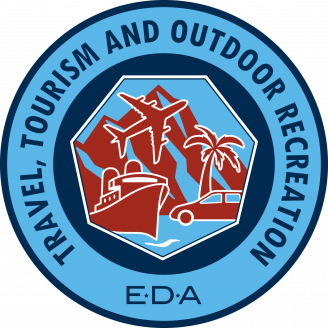
The U.S. Economic Development Administration’s (EDA) Travel, Tourism, and Outdoor Recreation program invested $750 million in American Rescue Plan funding to support communities across the country whose economies were hard hit by damage to these sectors from the COVID-19 pandemic. With funding going to every state and territory across 185 awards, EDA’s investments are rebuilding the travel and tourism sector and creating a more equitable, competitive, and resilient industry.
Learn more about the Travel, Tourism, and Outdoor Recreation grantees by exploring the American Rescue Plan Impact Map .
The Travel, Tourism, and Outdoor Recreation program is divided into two components:
- State Tourism Grants: $510 million in direct awards to help states quickly invest in marketing, infrastructure, workforce and other projects to rejuvenate safe leisure, business and international travel.
- Competitive Grants: $240 million to help communities that have been hardest hit by challenges facing the travel, tourism, and outdoor recreation sectors to invest in infrastructure, workforce, or other projects to support the recovery of the industry and economic resilience of the community in the future.
Each state or territory is utilizing its directly allocated funds to engage in activities that best support their travel, tourism, and outdoor recreation sectors. These activities include but are not limited to workforce training, new construction or upgrades to existing tourism infrastructure, tourism marketing and promotion, and tourism-related economic planning. The competitive grant program is distributed across 126 awards to support communities across the country as they rebuild and strengthen their travel, tourism, and outdoor recreation sectors. The competitive funding is expected to generate $1.1 billion in private investment and to create or save 10,291 jobs , according to grantee estimates. This program was designed to prioritize equity, and as a result, more than 50% of competitive awards are expected to directly benefit historically underserved communities and populations. In addition, $29.3 million across 12 awards is supporting coal communities and $21.2 million across 9 awards is supporting Indigenous communities.
Program Resources
- Notice of Funding Opportunity
- Frequently Asked Questions
- Travel, Tourism and Outdoor Recreation presentation slides (PDF)
- State Tourism Grant Allocations
- One Pager (PDF)
- Visit www.eda.gov/contact to find contact information for your Economic Development Representative
- EDA Program List
- Find Open Funding
- Resources & Tools
- Accessibility
- Commerce.gov
- EDA Archives
- Information Quality
- Massachusetts
- Operating Policies
- Privacy Policy
ITA Group continues global expansion, acquires Sydney-based Performance Incentives Learn More
Alert banner message text goes here... Text CTA >
A Guide to the Top Incentive Travel Destinations For 2 0 2 2

Incentive travel remains a top motivator, and many reward earners are eager for a new adventure (or just a change of scenery).
For some top performers, an upcoming incentive trip could be their first time traveling since the pandemic began—a trip they’ve been dreaming about for ages. Our experts are excited as ever to craft once-in-a-lifetime experiences to make travel dreams a reality, as well as help travelers navigate evolving safety guidelines.
Related: There are a lot of reasons to be excited about incentive travel in 2022. See our top 5 .
Your top performers deserve the very best, a destination that will motivate them to keep putting in all that hard work. A destination that is memorable, distinctive, and perhaps not-so-traditional.
Whether it’s tropics or bustling cities, these are the 10 most attractive destinations our buyers are booking right now for incentive travel. Any of the 10 experiences will make your hard-working trip qualifiers feel appreciated and re-energized.
Classic European Sites
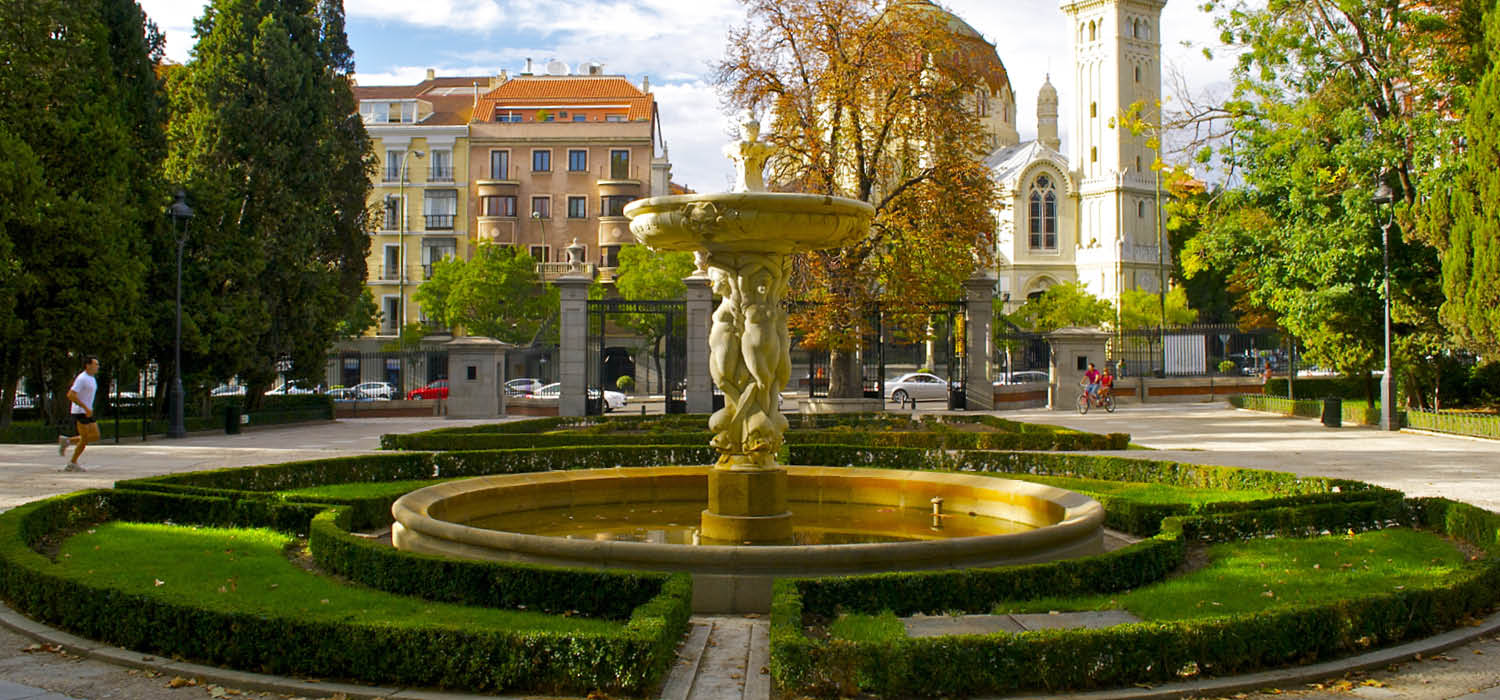
Madrid, Spain
Art, cuisine, nightlife, architecture—the capital city of Madrid has it all, along with a rich history to impress.
Highlights:
- Tour the Paseo del Arte museums, including the world-famous Prado, with works by the Impressionists and Pablo Picasso
- Wander the Parque del Retiro , an expansive urban park
- Listen to street musicians at Plaza Mayor , the grand central square
Hotel recommendation:
- Stay at Four Seasons Madrid , a brand-new property in the heart of the city. Walk to key attractions then return to a restful, modern retreat.

Dublin, Ireland
A small capital city with big personality, participants love Dublin for its friendly people, rich cultural heritage and happening nightlife scene.
- Enjoy the lively Temple Bar area with its many pubs and live music
- Tour the Guinness Storehouse brewery for the history of the iconic beverage
- Visit Trinity College , the oldest college in Ireland and alma mater of many literary greats, including Jonathon Swift and Oscar Wilde
- The Westbury , located in the center of town, is a destination itself because of its gorgeous central stairway and private art gallery.

Loch Lomond, West Dunbartonshire, Scotland
Seek out the “bonnie banks” of Loch Lomond, an inland lake made famous by the Scottish folk song of the same name, and take in the beauty of the surrounding Lowlands and Highlands.
- Explore Loch Lomond & the Trossachs National Park , which became Scotland’s first national park in 2002
- Journey through Dumbarton Castle in the ancient capital of Scotland
- Spend a day at the Loch Lomond Shores shopping district, which includes outdoor activities, boat trips and an aquarium
- Built in 1700 and renovated in 2020, the castle-like Cameron House is one of the most sought-after hotels in Scotland.
Sunny Tropic Locales
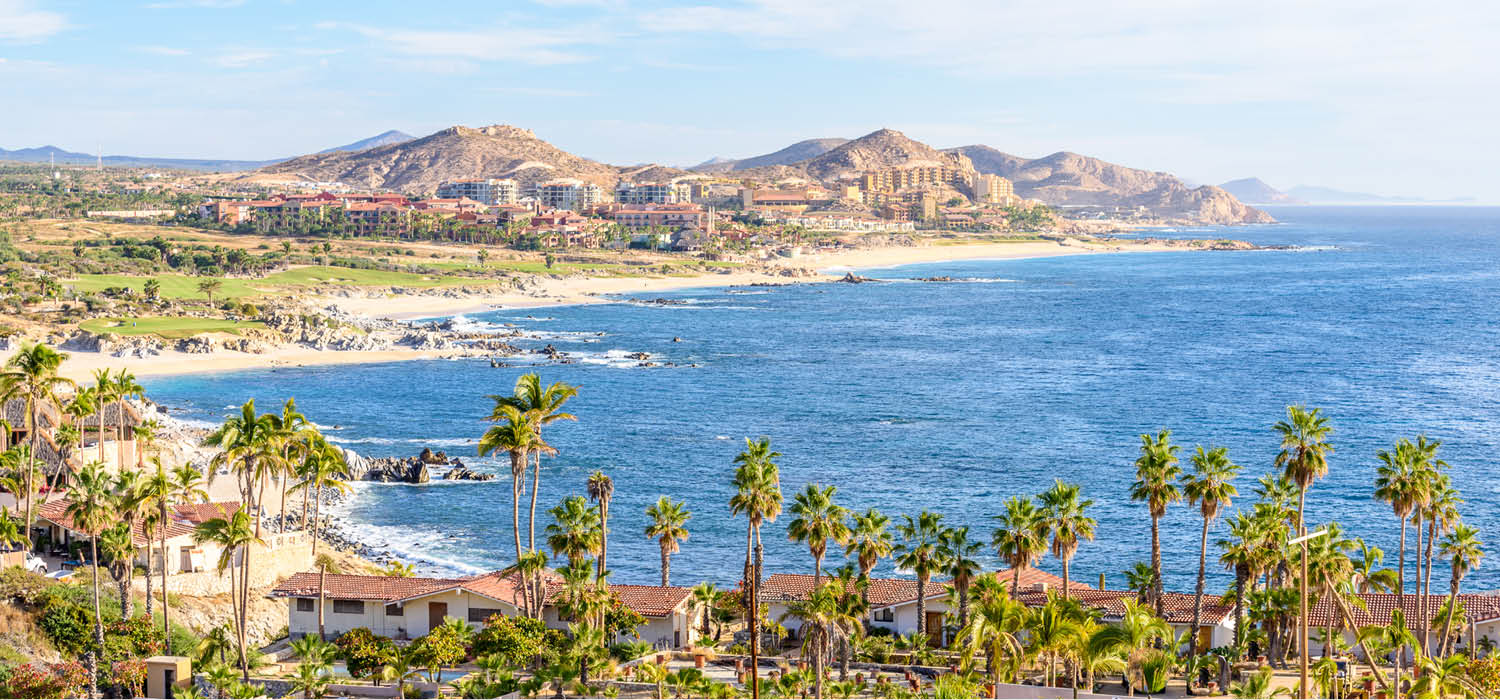
San José del Cabo, Mexico
San José del Cabo offers a more relaxed atmosphere than its better-known counterpoint Cabo San Lucas. Enjoy shopping, an enchanting plaza and dining experiences, all with plenty of sunshine and miles of beaches.
- Amble through the Art District for unique shopping and live music opportunities
- Scuba-dive the coral reefs of Cabo Pulmo National Park , a UNESCO World Heritage Site
- Swim with dolphins at Dolphin Discovery
- Zadun, a Ritz-Carlton Reserve opened in 2021 and boasts ocean views and indoor/outdoor living spaces in each guest room.
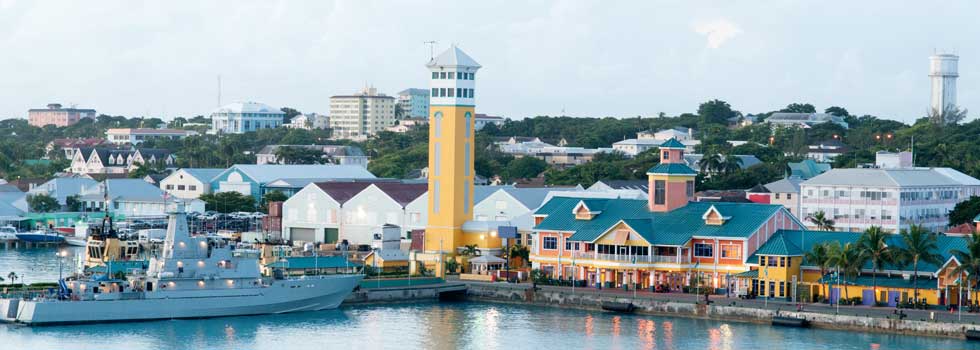
Nassau, Bahamas
For a tropical experience with a healthy dose of urban energy, check out Nassau, the capital of the Bahamas. Originally home to pirates and hustlers, the streets are always bustling.
- Witness the pirate history of the Bahamas with the wax recreations at the Pirates of Nassau Museum
- Delve into the past at Fort Charlotte , a British-colonial fort constructed in the late 18th century
- Walk through the natural wonderland of Ardastra Gardens & Wildlife Conservation Centre
- For large group travel, stay at the accommodating Grand Hyatt Baha Mar (it has 1,800 rooms on property!). Be sure to take advantage of its new Baha Bay water park, which opened July 2021.
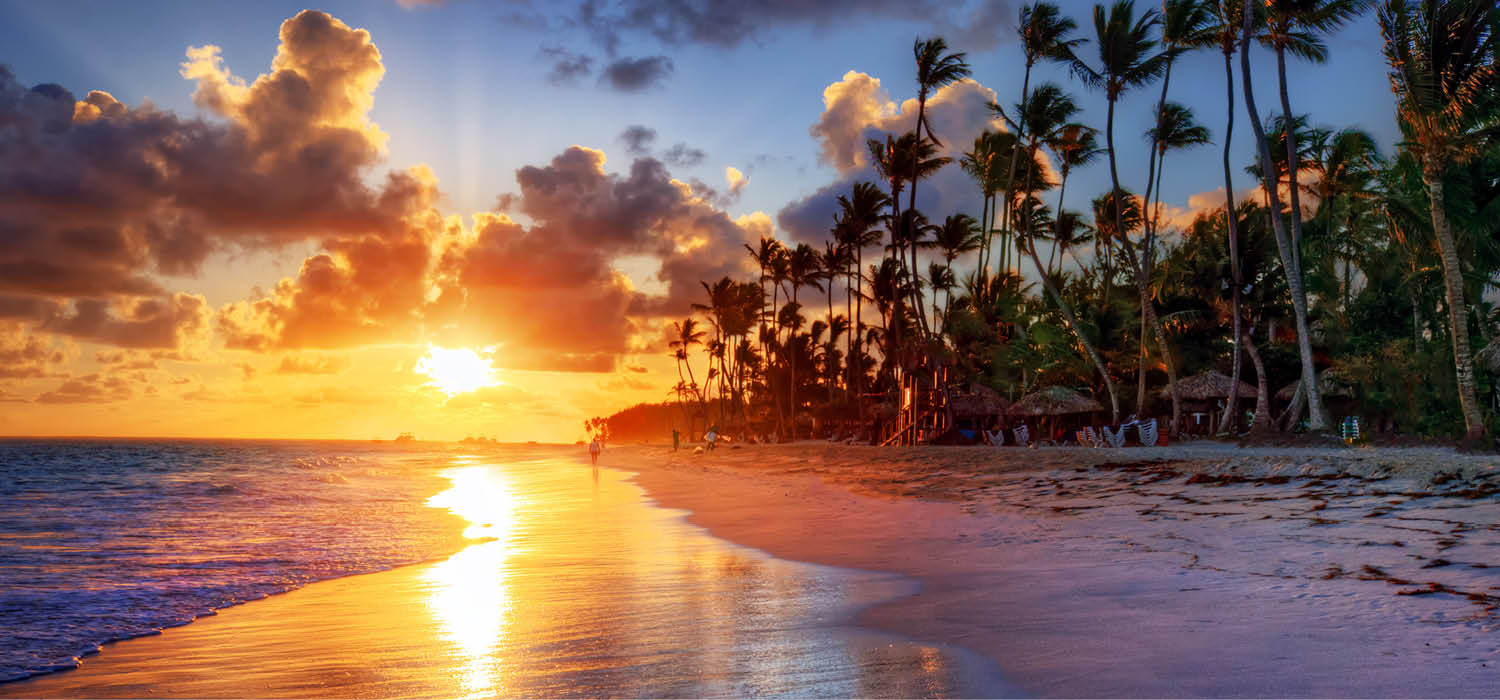
Palm Beach, Aruba
One of the most popular islands in the Caribbean, Aruba is known for its white, sandy beaches and all-inclusive resorts. Don’t be afraid to wander off the beaten path here!
- Stroll through the cozy capital, Oranjestad , for shopping and restaurants
- Observe magnificent waves beat against the rocky coast at Conchi “Natural Pool”
- Climb the landmark California Lighthouse for 360° views of the island
- The Ritz-Carlton Aruba includes its own casino and is currently refurbishing all its suites.
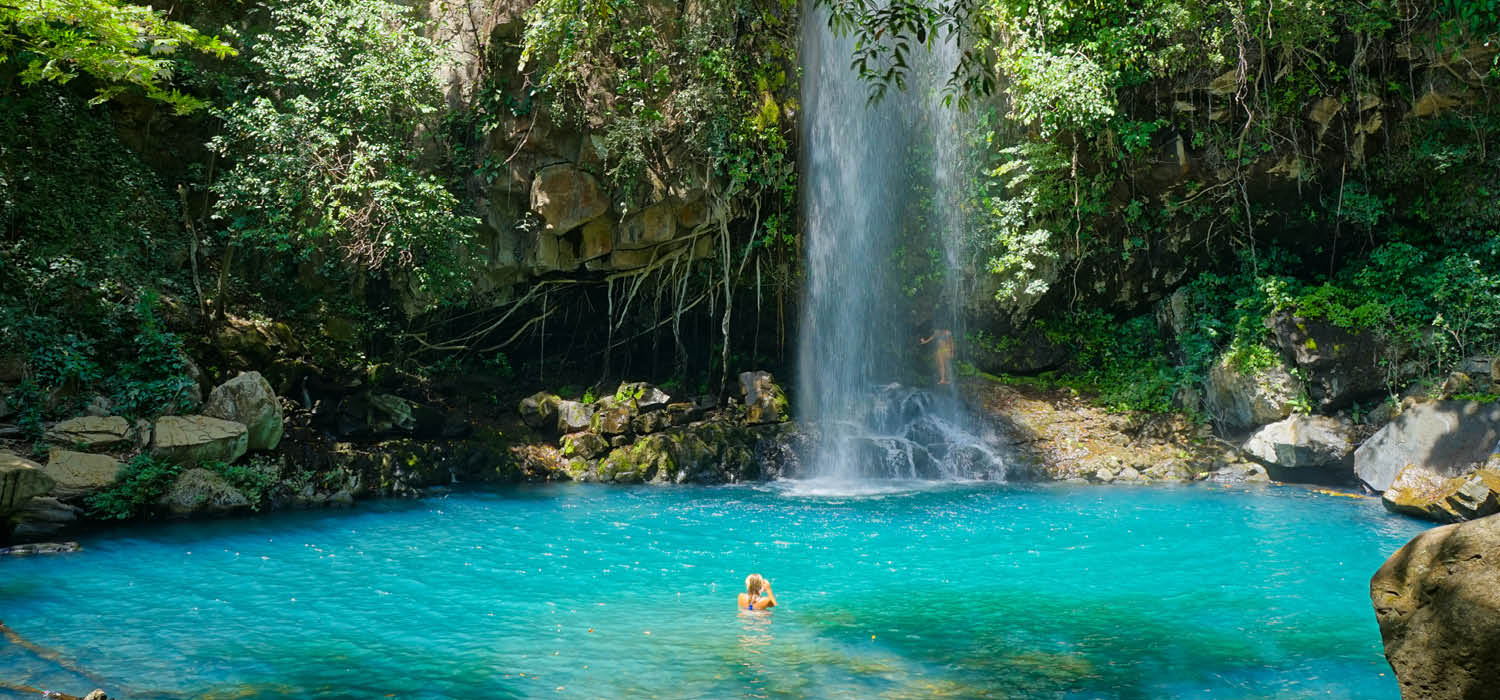
Guanacaste, Costa Rica
Costa Rica has incredible biological diversity. Discover all the beauty of its unspoiled beaches, fast-flowing rivers and national parks in Guanacaste.
- Engage in outdoor adventures such as zip-lining and rock climbing
- Take a day trip to iconic Arenal Volcano for horseback riding and hiking
- Investigate local fauna by partaking in activities like bird watching
- The Andaz Costa Rica Resort at Peninsula Papagayo underwent renovations in 2021 for an extra luxurious feel. Guests staying in Peninsula Papagayo can sign up for exclusive small group eco-activities .
U.S.-Based Adventures

Big Sky, Montana
For fresh air and wide-open skies year-round, escape to the natural splendor of the mountains of Montana. Outdoor enthusiasts praise Big Sky for its variety of activities.
- Ski the famous slopes at Big Sky Resort
- Hike Yellowstone National Park , one of the most popular national parks in the U.S.
- Learn fly-fishing at some of the best rivers for the sport in the world
- For a combination of lodge living and modern comfort, book rooms at Montage Big Sky .
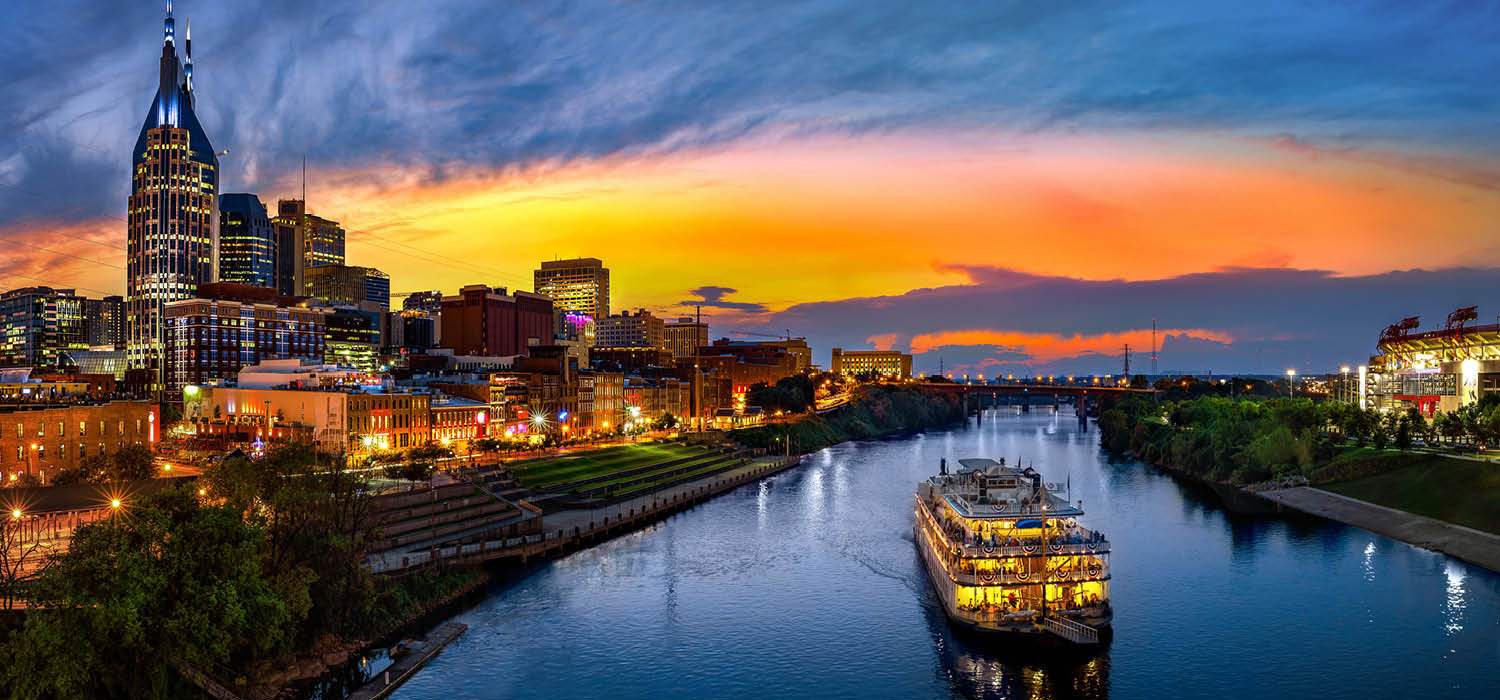
Nashville, Tennessee
While best known for its country music, Nashville is a destination spot for its revived downtown, festivals, shows and nightlife.
- Sample the best of downtown Nashville in the Lower Broadway District , an area popular for live music, honky-tonks, restaurants and shops
- Attend concerts at the Ryman Auditorium , the original home of the Grand Ole Opry
- Go behind the scenes of country music at the Country Music Hall of Fame and Museum
Hotel recommendations:
- The soon-to-open Embassy Suites by Hilton Nashville Downtown will be adjacent to the Music City Center convention center. The hotel promises a rooftop pool with bar and easy access to downtown attractions.
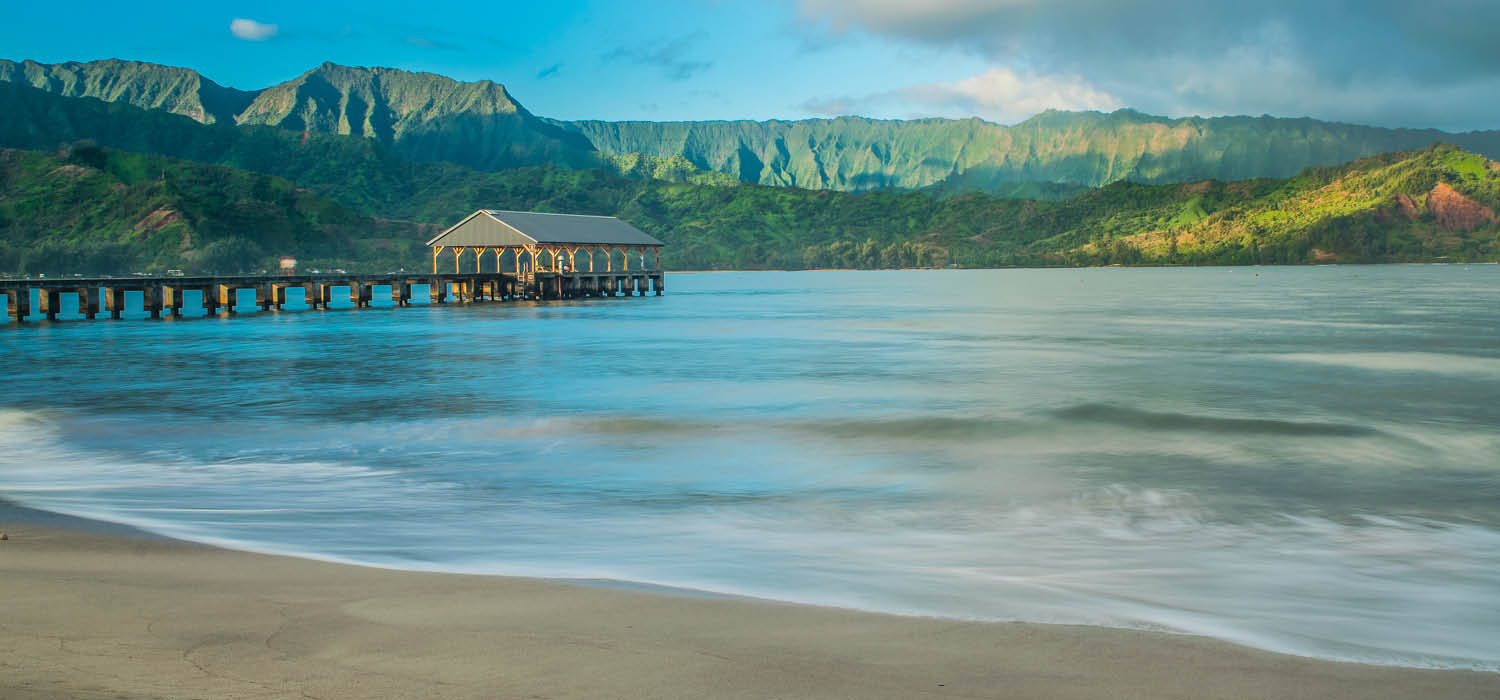
Hanalei Bay, Princeville, Hawaii
Hanalei Bay, a picturesque setting on Kauai, the Garden Island, offers several pristine beaches for surfing, paddleboarding, swimming or simply relaxing.
- Play golf on courses designed to wrap around the spectacular coastline at Makai Golf Course
- Study nesting seabirds and marine mammals at Kilauea Point National Wildlife Refuge
- Shop for authentic carved wood souvenirs from local artisans in Hanalei Town
- 1 Hotel Hanalei Bay , formerly the St. Regis Princeville is undergoing a full renovation that will infuse it with authentic details such as native greenery and reclaimed materials. It will be accepting group business beginning in October 2022.

Mandy joined ITA Group in 2005, serving in operations before transitioning to the purchasing team as a Buyer and Supervisor. In her current role as Lead Buyer, Mandy leads the internal presale process for financial and insurance brands, conceptualizing events, building program budgets, negotiating supplier partner contracts, and maintaining client and supplier relationships. She works closely with internal sales and operations teams to bring strategic recommendations to each program. Mandy enjoys traveling, attending concerts, cheering on her beloved Iowa Hawkeyes and Kansas City Chiefs, and spending time with family and friends, especially her two sons.
You Might Also Like
UN Tourism | Bringing the world closer
Investment readiness for green finance mechanisms initiative, share this content.
- Share this article on facebook
- Share this article on twitter
- Share this article on linkedin
Green Investments for Sustainable Tourism
- All Regions
Registration
In order to continue with the collaboration between UNWTO and IFC. It was decided to launch pilot phase in the following countries: India, Indonesia, Jamaica, Philippines, South Africa, Thailand, and Vietnam, with the view of expanding to several other countries in the next phase.
This pilot will be focus on an Investment Readiness Diagnostic that will be the basis for IFC’s proposed investment program. The program is a post-COVID medium-term credit line made available for hotels impacted by the downturn in tourism caused by the pandemic, coupled with provisions for retrofit greening, and disbursed in partnership with local financial institutions starting in 2021.
Please see the brief presentation .
Under the new Investment Readiness for Green Finance Mechanisms initiative, the UNWTO will work alongside the IFC, which is a member of the World Bank Group and the largest global development institution focused exclusively on the private sector in developing countries, on a series of training programmes. One of the main focuses of the new initiative will be working with private sector partners to promote green finance and share experience in resourcing sustainable buildings. The initial cooperation will consist in a series of trainings to promote green investments for a long term the recovery of the tourism sector. The first training is planned to start on 4 June, 2020 at 15:00 CET (Madrid time) in a webinar format, and it will culminate with an accreditation training provided by the EDGE Experts.
Presentations
- Download the Investments Readiness For Green Finance Mechanisms Presentation
- Access to Green Finance Mechanisms UNWTO and IFC Webinar Series
- One Planet Vision for a Responsible Recovery of the Tourism Sector
- Government Incentives for Green Hotels
- IFC Manuel Buttler
UNWTO is partnering with the IFC for a series of technical training programmes aimed at promoting green finance and unlocking its potential to accelerate tourism’s recovery and stimulate sustainable growth.

Objectives:
- Identify aggregators across the hotel value chain in order to promote and implement sustainability measures (Performance and Efficiency).
- Provide skills training on green building adoption and transitions to enable sustainable investments (Accreditations and Certifications).
- Facilitate sustainable investment mechanisms to access green finance opportunities (Compliance and Brand Reputation).
Audience and registration:
We invite government officials, hospitality investors, aggregators and tourism investment consultants to register .
Programme Structure:


P rogramme Timeline and Key dates:
4 june | tourism investments overview, 11 june | access to green finance mechanisms (sustainable hotels), 18 june | government green incentives (case studies), 25 june | green investment strategies (boost profitability), 9-10 july | edge experts training (accreditation), business case for sustainable hotels:.

1. Boost profit margins through utility savings

2. Increase revenue through satisfying consumer preference and reducing reputational risk

3. Future proof investment strategies

4. Safeguard against regulatory risk and benefit from incentives

5. Increase value and validation through certification

6. Ensure a long-term energy supply
BUSINESS CASE FOR SUSTAINABLE HOTELS: A publication by the International Tourism Partnership in collaboration with IFC
Incentive Tourism
- Living reference work entry
- Latest version View entry history
- First Online: 18 March 2022
- Cite this living reference work entry

- Zhen Lu 3
13 Accesses
Incentive tourism or travel has roots in expectancy and motivation theory (Mair 2015 ). Incentive tourism, as one of the major types of the MICE (Meetings, Incentives, Conferences, and Events) sectors, has long been used by companies or institutions as a noncash reward to their employees and external partners for achieving key business objectives (Society of Incentive Travel Executives 2021 ). Its uniqueness separates itself from other types of the MICE sector. Incentive tourism emphasizes fun, food, and other entertainment activities rather than education and work. The major players are companies and institutions offering incentive programs as a motivational tool for increasing productivity, incentive houses, travel agencies providing such programs to businesses, destination tourism organizations, and industry associations.
The earliest documented incentive travel program was probably in the 1900s, when National Register Company offered a free trip to their top performing employees...
This is a preview of subscription content, log in via an institution to check access.
Access this chapter
Institutional subscriptions
Li, X., L. Lu, and C. Chi. 2018. Examining incentive travelers: How motivation affects organizational commitment. International Journal of Tourism Research 20: 830–842. https://doi.org/10.1002/jtr.2235 .
Article Google Scholar
Mair, J. 2015. Incentive travel: A theoretical perspective. Event Management 19: 543–552. https://doi.org/10.3727/152599515X14465748512803 .
Mair, J., X. Jin, and J. Yoo. 2016. Exploring the site selection decisions of incentive travel planners. Event Management 20: 353–364. https://doi.org/10.3727/152599516X14682560744677 .
Ricci, P., and S. Holland. 1992. Incentive travel: Recreation as a motivational medium. Tourism Management 13: 288–296. https://doi.org/10.1016/0261-5177(92)90100-L .
Society of Incentive Travel Executives 2021. About Incentive Travel and SITE https://www.siteglobal.com/page/who-we-are . Assessed 8 Feb.
Download references
Author information
Authors and affiliations.
Ryerson University, Toronto, Canada
You can also search for this author in PubMed Google Scholar
Corresponding author
Correspondence to Zhen Lu .
Editor information
Editors and affiliations.
School of Hospitality Leadership, University of Wisconsin-Stout, Menomonie, WI, USA
Jafar Jafari
School of Hotel and Tourism Management, The Hong Kong Polytechnic University, Hong Kong, Hong Kong
Honggen Xiao
Section Editor information
Department of Tourism, Faculty of Economics and Business, University of Zagreb, Zagreb, Croatia
Nevenka Cavlek
Rights and permissions
Reprints and permissions
Copyright information
© 2022 Springer Nature Switzerland AG
About this entry
Cite this entry.
Lu, Z. (2022). Incentive Tourism. In: Jafari, J., Xiao, H. (eds) Encyclopedia of Tourism. Springer, Cham. https://doi.org/10.1007/978-3-319-01669-6_107-3
Download citation
DOI : https://doi.org/10.1007/978-3-319-01669-6_107-3
Received : 05 May 2021
Accepted : 26 November 2021
Published : 18 March 2022
Publisher Name : Springer, Cham
Print ISBN : 978-3-319-01669-6
Online ISBN : 978-3-319-01669-6
eBook Packages : Springer Reference Business and Management Reference Module Humanities and Social Sciences Reference Module Business, Economics and Social Sciences
- Publish with us
Policies and ethics
Chapter history
DOI: https://doi.org/10.1007/978-3-319-01669-6_107-3
DOI: https://doi.org/10.1007/978-3-319-01669-6_107-2
DOI: https://doi.org/10.1007/978-3-319-01669-6_107-1
- Find a journal
- Track your research
Research / Incentive Expectations and Reality in the Hospitality Industry
incentive travel
Incentive expectations and reality in the hospitality industry.
by Incentive Research Foundation in partnership with Questex
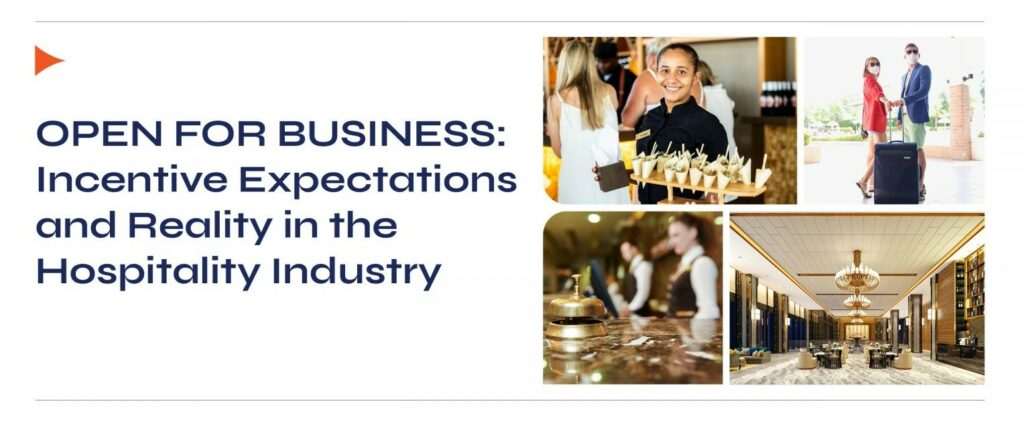
As travel restrictions and bans ease, companies are getting back to incentive travel resulting in extraordinary demand on a set of suppliers still largely in recovery mode. While many event owners and planners are ready to get back to business as usual, hoteliers, destination management companies, and tourism boards face very real ongoing challenges. The resulting gap between event stakeholder expectations and the reality of what providers can deliver is significant. Transparency on both sides is required to help set everyone up for success.
METHODOLOGY
This study was conducted from April 27, 2022 to June 17, 2022. The questionnaire was approximately 10 minutes in length with questions varying based on the respondent type. A total of 710 respondents completed the survey, with 84% from the US, 5% from Canada, 1% from Mexico and the United Kingdom. The balance of the respondents represented a wide mix of countries.
The four stakeholder groups were Hoteliers (n=280), Tourism Board/Convention & Visitors Bureaus (n=75), Destination Management Companies (n=125), and Incentive Planners / Third Party Agency (n=230).
EXECUTIVE SUMMARY
The incentive travel business continues to increase in activity after a significant slowdown with 63% of the industry anticipating significant growth. Nearly two-thirds of the industry indicate incentive travel is trending up for 2022 and beyond, with 13% saying incentive travel will increase by 50% over the next 18 months. Incentive planners are the most bullish, with 37% seeing incentive travel spend 10%-49% above 2021, and another 22% seeing incentive travel up 50% or more over 2021. Tourism boards have the most conservative outlook, likely as a result of domestic travel and tourism being brisk throughout the latter part of the COVID pandemic.
Outlook for Incentive Travel for Next 18 Months
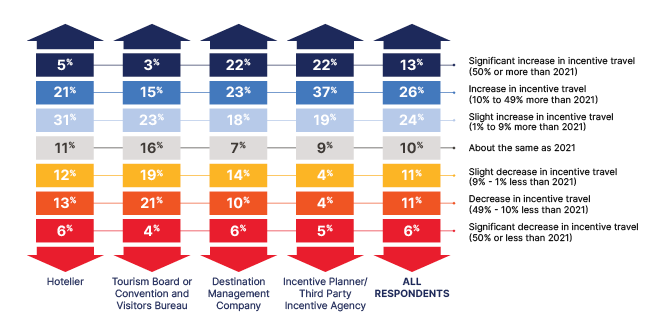
Incentive planners: These respondents are on the front-end of the demand, and rely on partners to deliver the desired experience. Unfortunately, many partners, including hotels, destination management companies, and tourism boards, continue to struggle with labor and readiness challenges.
Hotels: Hotels report they are well-poised to deliver on planner needs, with many reporting their full facilities including restaurant outlets, spas, gyms, and outdoor facilities are up and running. However only 49% report being staffed to pre-pandemic levels leading to the service-level challenges many are experiencing.
Tourism, convention, and visitor bureaus: This group cites significant competing priorities with the increase in leisure travel activities. Incentive travel is one of many priorities. Bureaus also report being staffed well under pre-pandemic levels, with just 29% staffed at pre-pandemic levels and another 43% noting they will staff up over the next 6 months. Bureaus in “sun and fun” destinations face the most pressure, with 70% of incentive planners targeting beach destinations.
Destination management companies (DMCs): Survey responses indicate this group is the most overwhelmed with many grappling with staffing challenges, gas prices, and adapting to changes in venues and other services within the geographies they serve. DMCs are by far the most staff-challenged, with just 26% staffed to pre-pandemic levels and another 12% indicating they are not planning to staff up to pre-COVID levels in the foreseeable future primarily citing identified operational efficiencies.
While the climate of flexibility and understanding was required during the early emergence from the pandemic, the sentiment appears to be fading.
Clients who were once accepting of COVID related issues, are increasingly losing their patience and want services delivered at pre-COVID levels, particularly where costs are higher than pre-pandemic. Every supplier group reported struggling with hiring and retaining staff and managing cost increases resulting from inflation, creating a gap in expectations and ability to deliver.
THE PLANNER PERSPECTIVE
More than three quarters of incentive planners ran an incentive program over the last 18 months. By and large, the programs have been evaluated as more challenging. Rates, availability of food outlets, response time from Hoteliers and DMCs were all attributes rated as worse when compared to pre-COVID incentive programs.
Destination Focus Incentive travel focus for the next 18 months will skew slightly toward domestic travel, with incentive planners almost equally split between domestic and international. Tier 1 and Tier 2 cities are tied for attention at 30% each with some planners citing that Tier 2 CVBs are increasingly working to fill gaps and deliver strong incentive-level experiences.
Incentive Travel Focus for Next 18 Months
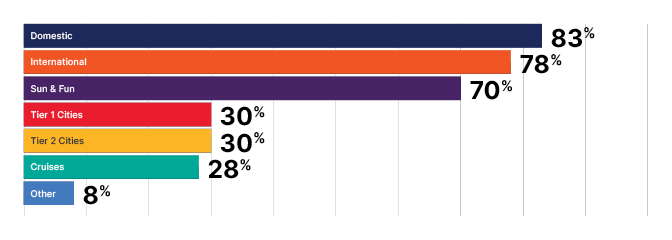
When considering where to place a program, 93% of planners are most concerned with staffing and service levels, 76% are concerned with food and beverage outlet availability and hours, and 72% are concerned with the cleanliness of properties. All of the issues cited boil down to staffing.
To help mitigate feelings of disappointment, suppliers could benefit from communicating ahead of the program, preferably at the time of contracting, noting where outlets and services may be more limited, and status of housekeeping services.
RFP Response Times Most planners expect hotels to respond to RFPs within a few days. Hotels report their average response time as slightly faster than what planners expect, with 50% of hotels reporting they respond on average within a day or two. On average DMC response to RFP’s is slightly slower than what planners expect with 53% of planners expecting responses within a few days, and 47% of DMCs reporting the ability to meet that expectation. Ten percent of DMCs note their average RFP response time is more than two weeks.
The response time differences are not entirely surprising given the need for creativity, connection into other providers (transportation, furnishings, entertainers, etc.) on the part of DMCs. Hoteliers are a bit more in control of the elements required to respond in a timely manner.
The dynamic at play means, in many cases, responses from vendors will not always be delivered in time for the presentation to the client. To help mitigate delayed supplier response times, planners should consider being as targeted as possible with where they are sending RFPs.
Time Expected and Average RFP Time
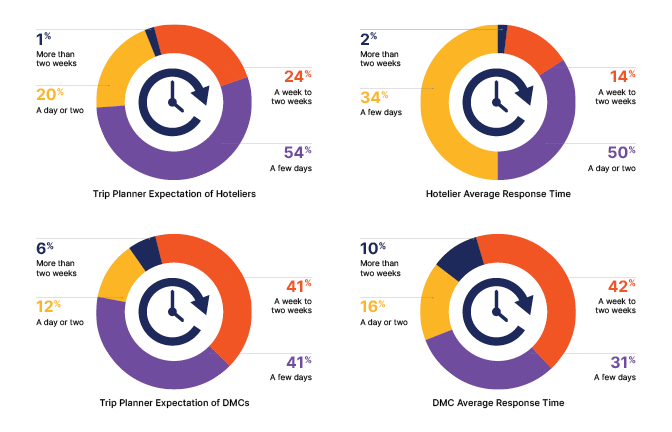
The number of site inspections has increased for 38% of the respondents over the last 18 months. Approximately two-thirds of those site inspections have been up to planners’ standards. Of those not up to standards, primary concerns cited are property maintenance and upkeep, cost increases in room rates, food and beverage, and general readiness for business.
Performance Concerns When looking at the ability of DMCs and CVBs to deliver over the next 18 months, incentive planners are principally concerned about rising expenses and staffing shortages. Transportation expenses and infrastructure are also concerns.
Tourism Boards, DMCs and CVBs
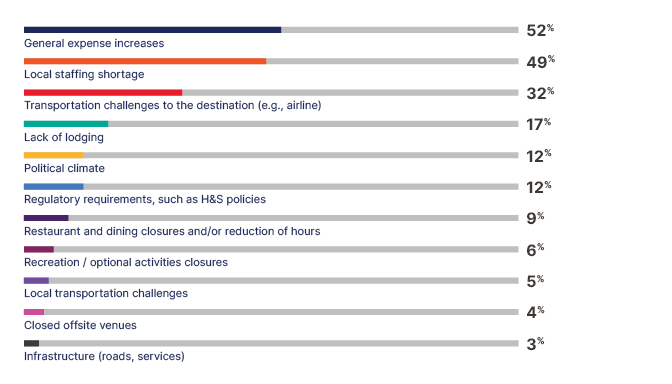
Service levels are of great concern when thinking about the next 18 months. 54% of incentive planners cite the ability to maintain and deliver expected service levels as their primary concern. Finding and hiring qualified staff was cited by 28%, and having all hotel venues and services open and available was cited by 26%.
Service Level Concerns: Hotels
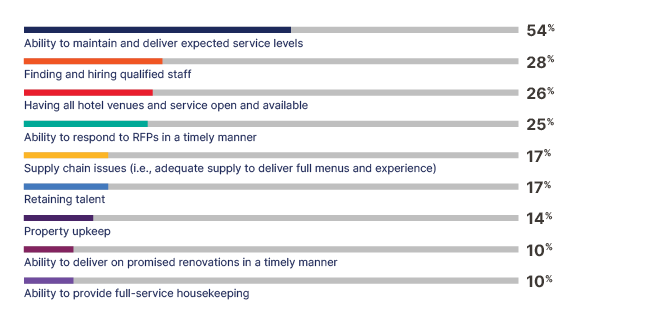
“ We can’t lower the bar but increase costs, especially if we are selecting a luxury hotel. The covid, supply chain, or staffing shortage excuses is not something we want to hear today if we are paying the same cost or higher as pre-covid .” – Incentive Planner
THE HOTEL PERSPECTIVE
The importance of incentive travel varies by supplier type with destination management companies giving it higher marks for importance to their business than other supplier types. Hotels had much more of a mix, with only 5% noting incentive travel is very important to their profitability, and another 46% noting incentive travel is a high priority or important. This tends to vary by hotel size with larger properties citing increased importance of incentive programs.
While hotels expect leisure travel to represent 30% of their business over the next 18 months, incentive travel is noted as a close second at 27%. Larger properties have a higher reliance on leisure travel, and they are expecting a strong demand into the future. Incentive travel for properties of all sizes is expected to continue without slowdown, with smaller properties expecting more of an uptake, possibly due to limited availability within larger hotels.
The Importance of Incentive Travel

As hotels work to fully recover, they are prioritizing restaurants, rates, housekeeping services, and room service to provide customers with what feels like more of a pre-COVID experience. Lower on the priority list are transportation services, partnerships with local tourism, and concierge services which were noted as less likely to be impacted by the pandemic.
Amenities and Services Returning to Pre-COVID Service Levels in Next 18 Months
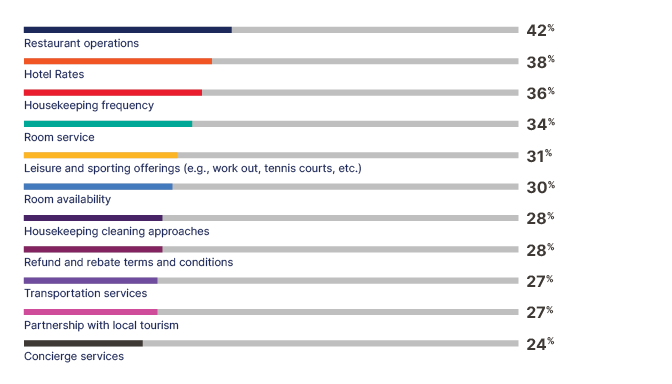
When asked about housekeeping services, 84% report offering daily housekeeping services with only 6% reporting they offer it on request only. And 95% of hotels report having all food and beverage outlets available (inclusive of room service). Of the 5% that remain, 86% report they will have some or all outlets available in the next 18 months.
Hoteliers also report they are responsive to RFPs. 86% indicated they are responding within a few days to requests for proposals. Just 14% note it takes a week to two weeks for them to respond.
RPF Response Times: Hotels

THE TOURISM BOARD / CVB PERSPECTIVE
Tourism boards noted restaurant and dining option closures, general expense increases, and infrastructure as their top three challenges related to incentive travel. Regulatory requirements (eg. environmental) are at the bottom of the list as they were perhaps less impacted by the pandemic.
Challenges Faced by Tourism Boards and CVBs
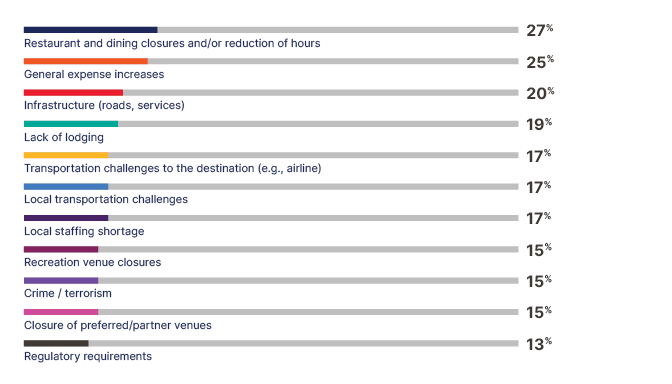
The availability of recreation activities, venue changes, hotel service changes, and health & safety protocols are items tourism boards and CVBs want to ensure incentive professionals understand as they consider the destination. Tourism boards and CVBs are in a strong position to help inform planners as they evaluate destinations, and can help fill gaps in knowledge and service in many cases.
Challenges Event Organizers Need to Understand (Tourism Board and CVB perspective)
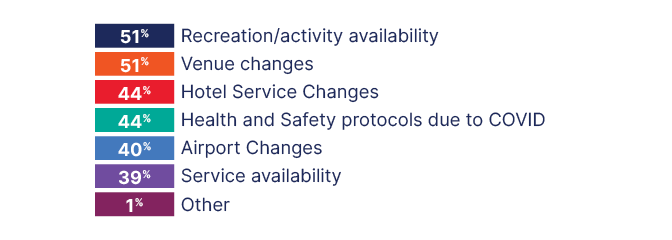
Planners noted that smaller destinations that are willing to go above and beyond have an opportunity to get their attention during this recovery time. Tier 2 destinations that have a strong product, are appropriately staffed, and have funding, are well positioned to win business in the current environment.
Being responsive to RFPs is part of the equation. The majority of tourism boards report they are able to respond within a few days or less. Just one in five note it takes a week or more to respond to a request for proposal.
RPF Response Times: Tourism Boards and CVBs

THE DESTINATION MANAGEMENT COMPANY (DMC) PERSPECTIVE
Incentive travel is a priority for 92% of DMCs, with about one in three saying it is their top priority. Unfortunately, DMCs are also the hardest hit by staffing, increases in expense, and transportation challenges.
Challenges Faced by DMCs
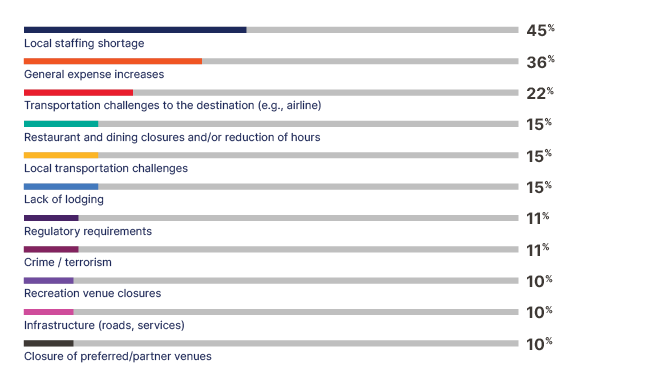
This group was also the hardest hit by the pandemic, with almost a third temporarily closing shop, and 6% permanently closing (likely underreported due to sample). The balance survived by shifting their focus to COVID support, digital events, and localized short-term travel. Among DMCs, 67% report staff reductions over the last 18 months. The road to recovery for DMCs is simply longer than for other supplier types, with more staffing and expense challenges due to the nature of their business.
For DMCs, it is important that incentive professionals understand there may be a reduction in the services they can offer and successfully deliver over the next 18 months. They are inundated with requests to service programs, which pulls them away from being able to appropriately staff up to serve the full scope of demand. It’s a viscous cycle.
“ …We are inundated with requests at all levels and still getting back to needed staffing. “ – Destination Management Company Respondent
All parties involved may also benefit from sticking with what is “tried and true” during this time to help deliver the experience desired. If the materials exist, DMCs are clear on the labor and cost required to deliver, and it meets the client needs, these known themes and experiences can wow attendees and create more of a sense of certainty for all involved. However, this isn’t always practical as planners need to demonstrate creativity and provide new experiences for well-traveled audiences.
Challenges Event Organizers Need to Understand (DMC perspective)
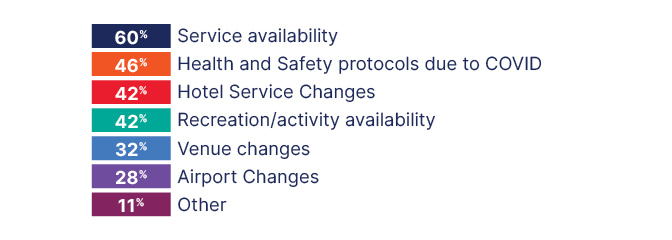
The average response time for RFPs is, not surprisingly, slower given the staffing challenges with 42% reporting they need a week to two weeks for proposals. A full 10% noted they need more than two weeks to appropriately respond to RFPs. Where this is the case, communicating a realistic delivery date for a proposal and sticking to it is important to remain part of the consideration set for the planner.
Biggest Cost Increases Impacting DMC Pricing

DMCs report that their biggest challenges are related to achieving / maintaining profitability, finding and hiring qualified staff, and destination infrastructure including transportation, drivers, and available venues. It is important to note that there is a perception among incentive professionals that DMCs are charging higher prices to make up for lost COVID revenue, while DMCs point to cost of talent, transportation / fuel surcharges, and venue rental costs as the primary drivers of price in today’s economy. Increased transparency into cost could provide program owners with the information they need to justify budget increases to their clients.
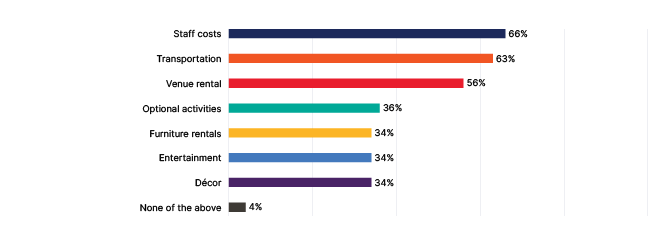
THE STAFFING CHALLENGE
Hotels While hotels report the most success in staffing to pre-COVID levels, only 49% of properties report they have achieved pre-COVID staffing levels. Another 38% are working to staff up over the next 6 months.
Staffing Levels: Hotels

The top three challenges faced by hotels working to hire staff are:
- Increased variability due to COVID surges and other unforeseeable factors 58%
- Time to train and upskill staff 54%
- Not enough qualified applicants 52%
COVID surges creating unpredictability is more acute for hotels perhaps due to the sheer scale of their hiring needs.
Tourism Boards / CVBs Within tourism boards / CVBs, less than one third report being staffed at pre-COVID levels with another 43% working to achieve pre-COVID staffing levels in the next 6 months. Interestingly, 7% note they are not planning to staff up to pre-COVID levels in the foreseeable future. Among that 7%, the key reasons for holding back include concern that business will not return to pre-COVID levels, and identification of operational efficiencies that allow them to operate with fewer staff.
Staffing Levels: Tourism Boards and CVBs

The top three challenges faced by tourism boards / CVBs include:
- Competitive wage offerings 59%
- Not enough qualified applicants 59%
- Time to train/upskill new hires 56%
Competitive wage offerings lead the challenges perhaps due to the funding structures and government ties within many tourism boards and CVBs.
Destination Management Companies DMCs are struggling to staff up, with just 26% at pre-COVID levels. Another 30% report they are staffing up over the next 6 months. And 33% intend to fully staff within the next year. What is most surprising is 17% of DMCs are not planning to staff up in the foreseeable future. The primary reasons given include identification of operational efficiencies at 47%, and not anticipating business will return to the same level for 33% of respondents. Another 13% report reducing the scope of their businesses and service offerings.
Staffing Levels: DMCs

Primary staffing challenges facing DMCs are:
- Not enough qualified applicants 54%
- Time and effort to train/upskill new hires 49%
- Unreliable hires 46%
The challenge of unreliable hires ranks higher for DMCs than other supplier types. This indicates that DMCs are going through the hiring process, only to end up needing to repeat the cycle in an environment where time is precious.
When considering the common themes of “not enough qualified applicants” and “time to train/upskill new hires” that are hiring challenges for all three segments, it seems the industry overall has an opportunity to increase awareness of the opportunities in the space and put programs in place to retain talent. Turnover is always an expensive proposition, but is even more costly in the current environment.
GAPS IN UNDERSTANDING AND PERSPECTIVE
Incentive professionals were asked to report what they feel would be important for each supplier group to know. Likewise, each supplier group was asked to report what they would like planners to know. When placed side-by-side, the gaps in understanding and perspective become clear.
Overarching themes include:
- The need for honest, transparent conversations during the sourcing and planning process
- The need for increased responsiveness to win and keep business
- A desire for more clarity around pricing and service availability
Beyond the overarching themes, there are fundamental differences and, in many cases, a lack of understanding for the challenges of the other party. For example, timelines are often dictated by clients and planners are trying to live into those timelines. Suppliers unable to staff up and deliver timely responses will likely lose business as a result in the near term.
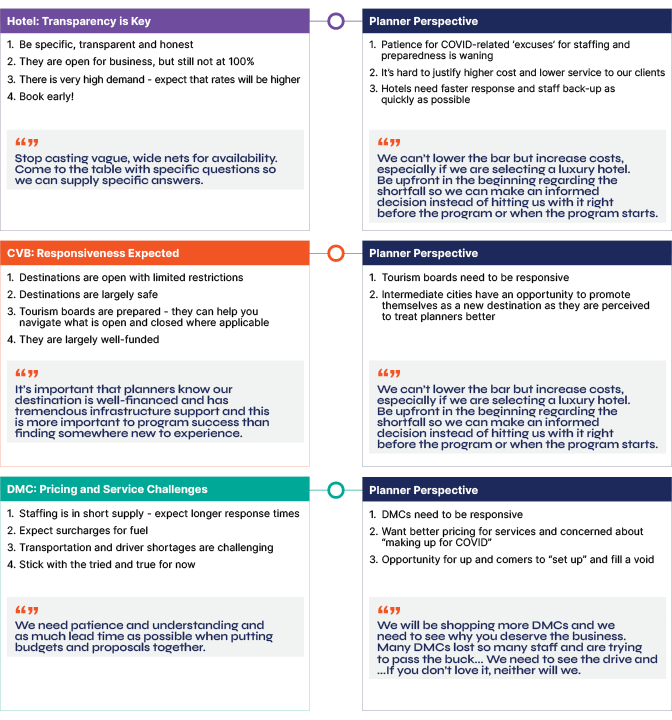
It is important to note that every group is feeling the pressure to deliver. Budget, talent, infrastructure, and more are significant challenges in the current environment and are expected to continue over the next 18 months.
This study points to the need for planners to present clear, specific program goals and requirements early in the process to help suppliers strapped for resources and talent focus on excellence in delivery of those elements.
In return, suppliers must be transparent, noting where they are able to deliver and where they simply do not have the infrastructure, talent, or resources to meet program needs. Doing so early in the process so planners can set expectations with their clients can prevent this gap in expectations and delivery.
Open for Business: Incentive Expectations and Reality in the Hospitality Industry was done in partnership with:

Related Posts
View all research.
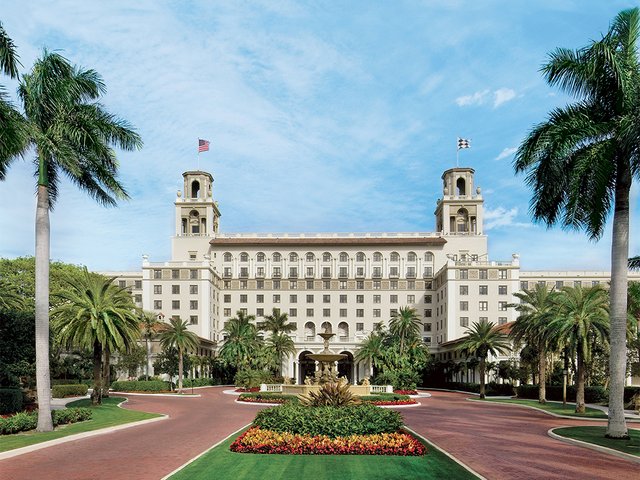
The State of International Incentives
The IRF, in conjunction with The Plam Beaches, gathered a group of corporate incentive program owners and third-party incentive house executives from Europe and Canada to discuss their primary influencers and drivers of incentive destination decisions.
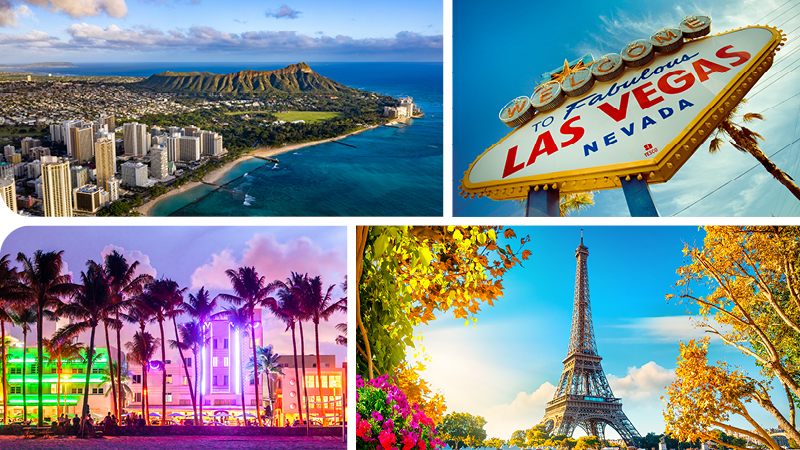
2024 Attendee Preferences for Incentive Travel
The study explores trends in attendee preferences, factors in destination selection, and how incentive travel program design can impact employee motivation.
IRF Updates Sign Up
Email Address*
First Name*
Industry Role* —Please choose an option— End-user / Program Owner Third Party Buyer Supplier Media Academic/Research Other
Supplier Role* —Please choose an option— Hotel Merchandise Gift Card CVB DMC Other
Where are you based?* —Please choose an option— North America Europe Asia Pacific Latin America and the Caribbean Africa
I consent to receive IRF updates and announcements via email. For further information, please consult the Privacy Policy.
- Incentive Travel
25 / 09 / 2023
What Is Incentive Travel? (Explained With 7 Examples)

In today's competitive business landscape, organizations are continually seeking innovative ways to motivate their employees and drive success. One such strategy that has gained immense popularity in recent years is incentive travel. Let’s delve into the world of incentive travel, explore what it is, how it compares to cash bonuses, its impact on employee motivation, and its significance for organizational goals. We'll also discuss the different types of incentive travel, the target audience for such programs, their frequency, and whether you should create a plan in-house or collaborate with an agency like MICEHospitality. Additionally, we'll provide you with a useful checklist for creating an effective incentive travel plan and share some inspiring examples of successful incentive travel programs.
What is Incentive Tour?
Incentive tour is a powerful motivational tool used by organizations to reward and recognize their top-performing employees. It involves offering a travel experience as a reward for achieving specific performance goals or targets. Unlike cash bonuses, which often get absorbed into routine expenses, incentive tour offers a memorable and highly motivating experience that employees can cherish for a lifetime.
The concept of incentive tour is rooted in the idea that employees who feel valued and appreciated for their contributions are more likely to be engaged, motivated, and committed to their work. It goes beyond the traditional approach of monetary compensation and taps into the fundamental human desire for experiences, adventure, and personal growth.
Incentive Tour vs. Cash Bonus
The debate between incentive tour and cash bonus is a common one in the realm of employee motivation. While both approaches have their merits, incentive tour stands out for several reasons. First and foremost, it provides a tangible and exciting reward that goes beyond monetary compensation. When employees are offered a chance to embark on an all-expenses-paid trip to a dream destination, it creates a sense of anticipation and excitement that money alone cannot match.
Moreover, incentive tour offers a unique opportunity for team building and bonding among employees. When colleagues travel together, they form stronger connections and develop a deeper sense of camaraderie, which can positively impact workplace dynamics. Cash bonuses, on the other hand, do little to foster such relationships.
In addition to the tangible rewards, incentive tour offers intangible benefits that can have a lasting impact on employees. Travel experiences often lead to personal growth, cultural enrichment, and the creation of cherished memories. These aspects contribute to an employee's overall well-being and happiness, which, in turn, can enhance their job satisfaction and performance.
When employees return from an incentive trip, they often bring back newfound energy and enthusiasm to the workplace. This boosts their morale and leads to increased productivity and a more positive work atmosphere. In contrast, cash bonuses, while appreciated, may not have the same long-term effect on employee motivation and engagement.
Why Incentive Trips Are Important: Impact on Employee Motivation and Organizational Goals
Incentive trips play a pivotal role in boosting employee motivation. They serve as concrete milestones that employees strive to achieve, knowing that their hard work will be rewarded with a remarkable travel experience. This anticipation can fuel increased productivity, engagement, and overall job satisfaction among employees.
From an organizational perspective, incentive travel aligns employee efforts with company goals. By setting specific performance targets tied to the trip, businesses can channel their workforce's energy towards achieving strategic objectives. Whether it's increasing sales, improving customer satisfaction, or enhancing productivity, incentive travel programs can be tailored to support various organizational priorities.
Types of Incentive Travel
Incentive travel programs come in various forms, each catering to different employee preferences and organizational budgets. Here are the most common types:
All-Expense-Paid Trips: These are the most extravagant incentive travel programs, covering everything from flights and accommodation to meals and activities. They offer employees a worry-free experience, allowing them to fully immerse themselves in the destination.
Just Stay Incentives: In this type of program, employees are rewarded with a complimentary stay at a luxurious resort or hotel. While it doesn't include travel expenses, it still provides a relaxing and rejuvenating experience.
Just Travel: Here, the focus is solely on the travel aspect. Employees receive travel vouchers or points that they can use to plan their dream vacations. This option offers flexibility and allows individuals to choose destinations that resonate with their interests.
Adventure-Based Incentives: For employees seeking thrill and adventure, organizations can offer incentive programs that include activities such as zip-lining, hiking, or water sports. These programs appeal to those with a sense of adventure and a love for the outdoors.
For Whom Should You Run an Incentive Travel Program
Incentive travel programs are versatile and can be tailored to suit various industries and roles. They are particularly effective for:
Sales Teams: Rewarding top-performing salespeople with incentive trips can drive revenue growth and motivate others to excel.
Customer Service Teams: Recognizing outstanding customer service representatives can improve customer satisfaction and loyalty.
Managers and Executives: Providing leadership with incentive travel opportunities can strengthen their commitment to the organization's success.
Cross-Functional Teams: Incentive travel programs can also be designed to encourage collaboration and teamwork among employees from different departments, fostering a more cohesive and innovative workplace culture.
How Often Should You Run an Incentive Travel Program
The frequency of incentive travel programs can vary depending on your organization's goals and resources. Some companies offer annual trips to maintain consistent motivation, while others may opt for quarterly or biannual programs for more frequent rewards. The key is to strike a balance that keeps employees engaged without overextending the budget.
Annual programs work well for organizations with stable financial resources and a larger workforce, as they can spread the costs over a longer period. Quarterly or biannual programs, on the other hand, are suitable for smaller companies or those with budget constraints.
When determining the frequency, it's essential to consider the nature of your industry and the typical sales or performance cycles. For example, in industries with seasonal fluctuations, it may be more meaningful to schedule incentive trips during off-peak periods to maintain motivation year-round.
In-House Planning vs. Agency Collaboration
When it comes to planning your incentive travel program, you have two primary options: handling it in-house or partnering with a specialized agency like MICEHospitality. Each approach has its advantages.
In-House Planning
Advantages:
Greater Control: Planning in-house allows for complete control over every aspect of the program, from destination selection to itinerary planning.
Customization: You can tailor the program to align with your company culture, values, and employee preferences.
Cost Control: In-house planning can sometimes be more cost-effective, as you have direct control over expenses.
Considerations:
Resource Intensive: Planning incentive travel programs can be time-consuming and require significant resources, including staff time and expertise.
Logistics: Managing the logistics of travel, accommodation, and activities can be complex, especially for large groups.
Agency Collaboration
Expertise: Specialized agencies like MICEHospitality have industry-specific knowledge, contacts, and experience to ensure a seamless and memorable travel experience.
Streamlined Logistics: Agencies handle all the logistical details, from negotiating with vendors to managing travel arrangements.
Time Savings: Partnering with an agency frees up your internal resources, allowing your team to focus on other critical tasks.
Cost: Agency services come at a fee, so it's essential to weigh the cost against the convenience and expertise they provide.
The choice between in-house planning and agency collaboration ultimately depends on your organization's resources, expertise, and specific goals. Whichever route you choose, meticulous planning and attention to detail are crucial for a successful incentive travel program.
Checklist for Creating an Effective Incentive Travel Plan
Creating a successful incentive travel plan requires meticulous planning and attention to detail. Here's a comprehensive checklist to guide you through the process:
Define Clear Goals: Begin by clearly outlining the performance targets and metrics that employees must meet to qualify for the incentive trip. These goals should align with your organization's broader objectives.
Select the Right Destination: Choose a destination that aligns with the interests and preferences of your employees. Consider factors such as travel time, cultural appeal, and accessibility.
Budget Wisely: Determine a budget that allows for a memorable experience without straining your resources. Consider all costs, including travel, accommodation, meals, activities, and incentives.
Engage Employees: Involve employees in the planning process to ensure their preferences and needs are considered. Conduct surveys or focus groups to gather input on destination choices, travel dates, and activities.
Design an Engaging Itinerary: Craft an itinerary that strikes a balance between work-related activities (e.g., recognition events, meetings) and leisure activities (e.g., sightseeing, team-building exercises). Ensure that the itinerary caters to various interests and preferences.
Consider Logistics: Pay meticulous attention to travel arrangements, including flight bookings, airport transfers, and ground transportation. Additionally, carefully select accommodations that offer comfort and convenience.
Safety and Health Measures: In the post-pandemic world, prioritize the safety and well-being of your employees. Implement health and safety protocols, and stay updated on travel advisories and restrictions.
Communication: Clearly communicate the program's goals, rules, and rewards to all eligible employees. Maintain open lines of communication throughout the planning process and provide regular updates.
Recognition and Awards: Plan recognition events during the trip to acknowledge and celebrate the achievements of participants. Consider awards or certificates to commemorate their success.
Feedback Mechanism: After the trip, solicit feedback from participants to evaluate the program's effectiveness. Use this feedback to make improvements for future incentive travel programs.
Evaluate ROI: Assess the return on investment (ROI) of the incentive travel program by measuring its impact on employee performance, engagement, and organizational goals.
By following this comprehensive checklist, you can create an incentive travel program that not only outranks competitors but also elevates your organization's performance and employee satisfaction.
Successful Incentive Tourism Examples
To inspire your incentive travel planning, here are some real-life examples of companies that have executed remarkable incentive travel programs:
Reliance Industries Limited
Program Highlights: Reliance Industries, one of India's largest conglomerates, runs incentive travel programs for its employees to recognize exceptional performance. The company offers all-expense-paid trips to both domestic and international destinations. These trips often include luxury accommodations, cultural experiences, and team-building activities.
Tata Motors
Program Highlights: Tata Motors, a subsidiary of Tata Group, is known for its innovative incentive travel initiatives. The company organizes trips for top-performing employees, which include visits to manufacturing plants, international auto shows, and adventure getaways. These programs align with Tata Motors' commitment to recognizing and nurturing talent.
Program Highlights: Infosys, a global IT services company, conducts incentive travel programs for its employees in India. These programs typically feature a mix of professional development, such as training sessions and conferences, along with leisure activities at picturesque destinations. Infosys emphasizes the holistic development of its workforce through these initiatives.
Program Highlights: IBM India, a subsidiary of IBM Corporation, offers incentive travel opportunities for its employees. These programs often include participation in international conferences, workshops, and recognition events at exotic locations. IBM India's incentive travel initiatives align with its commitment to fostering a culture of innovation and excellence.
Program Highlights: Accenture, a global consulting and technology services company with a significant presence in India, runs incentive travel programs for its Indian employees. These programs may involve global recognition events, conferences, and networking opportunities held in desirable international locations. Accenture's incentive travel initiatives aim to reward high performance and promote career growth.
Microsoft India
Program Highlights: Microsoft India, a subsidiary of Microsoft Corporation, operates a variety of incentive travel programs for its employees. These programs offer opportunities to attend international conferences, recognition events, and leadership development seminars in attractive destinations. Microsoft India emphasizes employee engagement and professional growth through these initiatives.
HCL Technologies
Program Highlights: HCL Technologies, a leading IT services and consulting company based in India, has implemented incentive travel programs as part of its employee recognition strategy. These programs often include global forums, seminars, and recognition events that allow employees to network with international counterparts. HCL Technologies values employee empowerment and growth through these initiatives.
These incentive tourism examples illustrate how both Indian companies and multinational corporations operating in India prioritize incentive tour as a means of recognizing and motivating their employees. By providing employees with opportunities to travel, learn, and bond with colleagues, these companies not only boost performance but also foster a positive work culture that values achievement and personal development.
In conclusion, incentive travel is a potent tool for enhancing employee motivation, aligning organizational goals, and ultimately driving success. Whether you choose to offer all-expense-paid trips or travel vouchers, the key is to create a program that resonates with your employees and inspires them to excel. By following the checklist and drawing inspiration from successful examples, you can craft an incentive travel program that not only outranks competitors but also elevates your organization's performance and employee satisfaction.

- Conference Organizer
- Event management
- Team Outing
- Travel Planner
- Wedding Planning
- Partner with us
Copyright © 2022-2023 Mice Hospitality. all rights reserved.
Get a quote
- Home (current)
Please enter your email address
- English (UK)
- English (CA)
- Deutsch (DE)
- Deutsch (CH)
The complete guide for incentive trips for employees
Top 7 incentive travel companies, what is an incentive travel company, benefits of using a travel incentive company, utilizing established supplier networks, expert destination knowledge, managing on-site logistics, cost optimization, risk management and mitigation, measuring and evaluating the trip’s success, 1. travelperk.
- Over 25,000 negotiated rates on hotels when booking with TravelPerk
- A concierge team to suggest once-in-a-lifetime activities and book pre-paid restaurants for your stay.
- Access to a 24-hour customer service line for all attendees, where a team of real people is on hand to answer any questions.
- VAT recovery reports can help you save up to 20% on incentive trip costs.
- Improved compliance with travel policies baked into the platform.
- The ability to pay, report, and invoice all company travel with just one account.
?)
See how to save your company time and money on business travel
2. ita group.
- Expertise in destination management.
- Immersive brand experiences.
- Concierge air travel.
- Risk management and traveler safety services.
- Pre- and post-analytics for insights into the trip’s success.
3. Maritz Global Events
- Travel program design and campaign communications.
- Sourcing and contracting hotels and venues.
- Simplified registration and ticketing.
- On-site support and coordination.
4. Creative Group
- Customized group incentive travel programs tailored to a business’s specific goals, preferences, and budgets.
- Relationships with hotels, independent properties, destination management companies, airlines, and transportation companies.
- Mobile apps, interactive platforms, and digital tools provide attendees with real-time information, engagement opportunities, and personalized communication.
5. BI Worldwide
- An event management app that engages attendees before, during, and after trips.
- Destination selection and management.
- Planning unique excursions, team-building exercises, and exclusive events.
- On-site event management services.
- Data analytics and reporting tools to measure the performance and impact of group incentive travel programs.
6. Cadence Travel
- Customized incentive travel programs according to requirements and preferences.
- A dedicated trip planner that acts as a single point of contact for all trip-related operations.
- Hotel sourcing, negotiating, and contracting specialists.
- On-site staffing for logistical support.
- Attendee travel monitoring to ensure duty of care.
7. Brightspot
- Customized sales incentive programs to help drive performance improvement and sales engagement.
- Incentive trip planning.
- Integrated engagement campaigns.
- Incentive software platform to help companies manage their incentive travel programs.
Wrapping up
?)
Make business travel simpler. Forever.
- See our platform in action . Trusted by thousands of companies worldwide, TravelPerk makes business travel simpler to manage with more flexibility, full control of spending with easy reporting, and options to offset your carbon footprint.
- Find hundreds of resources on all things business travel, from tips on traveling more sustainably, to advice on setting up a business travel policy, and managing your expenses. Our latest e-books and blog posts have you covered.
- Never miss another update. Stay in touch with us on social for the latest product releases, upcoming events, and articles fresh off the press.
- Business Travel Management
- Offset Carbon Footprint
- Flexible travel
- Travelperk Sustainability Policy
- Corporate Travel Resources
- Corporate Travel Glossary
- For Travel Managers
- For Finance Teams
- For Travelers
- Thoughts from TravelPerk
- Careers Hiring
- User Reviews
- Integrations
- Privacy Center
- Help Center
- Privacy Policy
- Cookies Policy
- Modern Slavery Act | Statement
- Supplier Code of Conduct
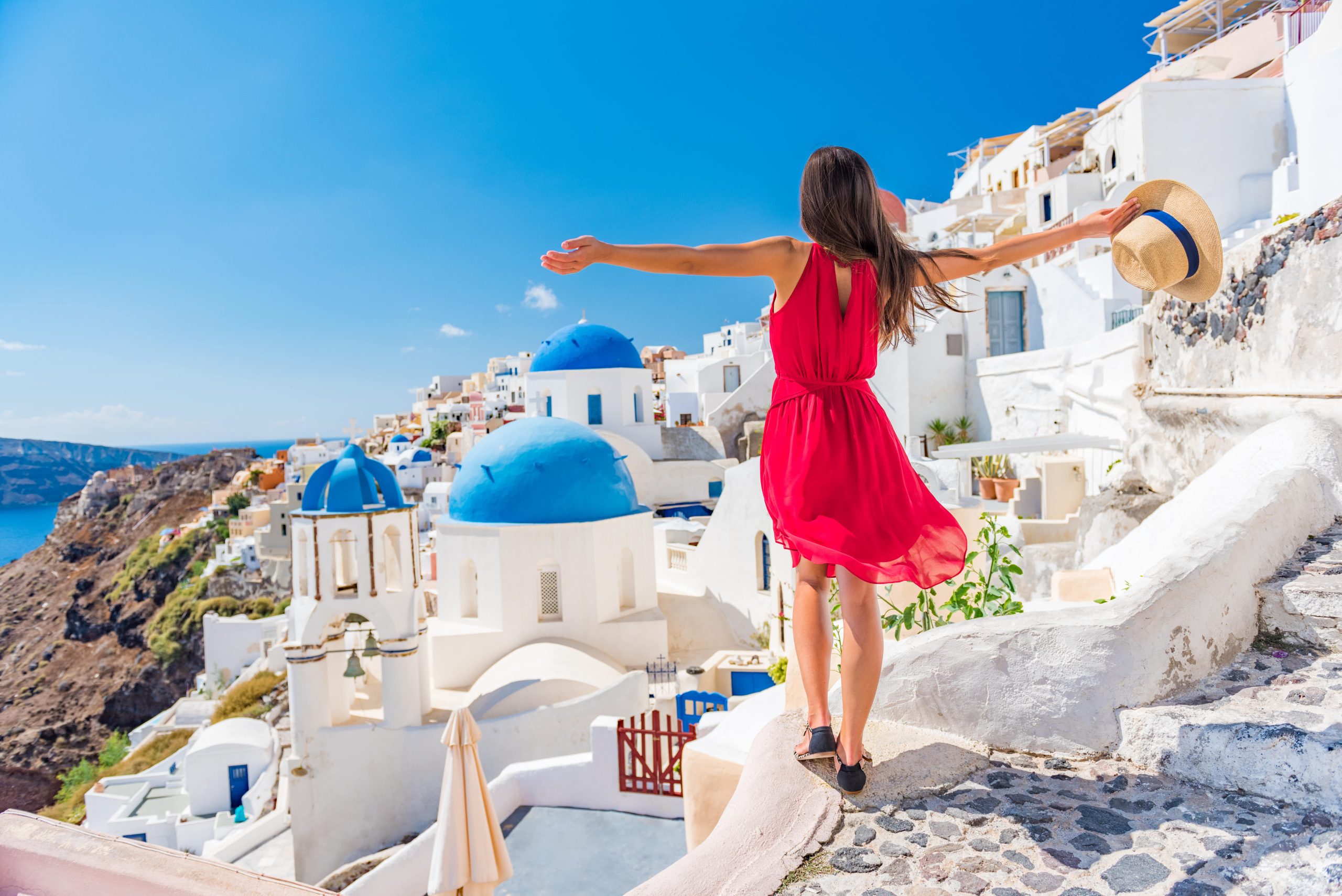
Travel Incentives & Employee Getaways
In today’s competitive market, businesses must keep their employees motivated and engaged to continue being successful. One way to do this is by offering travel incentives. These incentives serve as a motivation to achieve specific goals and targets. At Incentives Marketplace , we offer a wide range of travel options to help you choose the perfect reward for your employees.
Why Travel Incentives?
Travel incentives are more than just rewards; they’re an opportunity for your team to relax, unwind, and experience new things together. A well-planned travel incentive can help foster a sense of community within your team, and that feeling of togetherness can boost productivity levels. Offering travel incentives can also improve employee retention rates by demonstrating that you value your employees and are willing to invest in experiences that directly benefit them.
What We Offer
At Incentives Marketplace, we understand that one size does not fit all, so we offer a variety of travel incentives to choose from. Whether you’re looking for a weekend getaway, a luxury cruise, or an all-inclusive resort trip, we have you covered. Our team of experts is here to help you plan the perfect travel incentive that suits your business’s goals and budget.
Weekend Getaways
Weekend getaways are perfect for those who want to take a short break without using too much of their holiday allowance. Our weekend getaway packages offer a range of options, from scenic countryside retreats to bustling city breaks. Each package is carefully chosen to provide a unique experience that fits your budget and your team’s requirements.
Luxury Cruises
Luxury cruises are perfect for those who wish to experience ultimate relaxation and luxury at sea. Our cruise packages offer a variety of options, from sun-soaked Mediterranean voyages to exotic trips to the Caribbean. We take care of every detail, from transportation to dining reservations. All you need to do is sit back, relax, and enjoy the experience.
All-Inclusive Resorts
All-inclusive resorts offer an experience that covers everything from accommodations to meals, drinks, and activities. Our all-inclusive packages offer a variety of options, from tropical Caribbean hideaways to exotic Asian destinations. We customize each package to meet your specific requirements, so all you have to do is enjoy the experience. Contact us today to learn more about our travel incentive program.
In addition to our enticing travel options, our travel incentive program at Incentives Marketplace is designed to offer businesses a comprehensive solution for employee motivation and engagement. Here are some key reasons why our travel incentives stand out:
Tailored Solutions for Your Business
We understand that every business is unique, and our team works closely with you to tailor travel incentives that align with your company’s culture, values, and goals. Whether you’re a small startup or a large corporation, we have customizable packages to suit your specific needs.
Global Reach and Diverse Destinations
Incentives Marketplace goes beyond the ordinary, offering a global array of destinations to choose from. Whether your team dreams of exploring historical European cities, lounging on tropical beaches, or embarking on adventurous escapades, our diverse range of travel options ensures there’s something for everyone.
Memorable Experiences for Lasting Impact
We believe that the best incentives create lasting memories. Our travel packages are curated to provide a change of scenery and memorable experiences that employees will cherish. These shared moments contribute to team bonding and create a positive work environment.
Seamless Planning and Execution
Planning a group travel incentive can be a logistical challenge, but with Incentives Marketplace, you can leave the details to us. From coordinating transportation and accommodation to organizing group activities, our experienced team ensures a seamless and stress-free experience for both you and your employees.
Flexible and Adaptable Programs
Recognizing the dynamic nature of businesses, we offer flexibility in our programs. Whether you want to reward individual achievements, team milestones, or departmental successes, our travel incentives can be adapted to various performance metrics, ensuring a fair and motivating reward system.
Continuous Support and Communication
Our commitment to your satisfaction doesn’t end with the booking. We provide ongoing support and communication throughout the incentive program to address any questions or concerns, ensuring your employees are well-informed and excited about the upcoming travel experience.
Incentives Marketplace is not just a provider of travel incentives; we are your partners in enhancing employee engagement, fostering a positive workplace culture, and ultimately contributing to the success of your business. Contact us today to explore how our travel incentive program can elevate your company’s motivation and performance levels.
Schedule a Demo
- Asia Briefing
- China Briefing
- ASEAN Briefing
- India Briefing
- Vietnam Briefing
- Silk Road Briefing
- Russia Briefing
- Middle East Briefing
- Asia Investment Research
Thailand Approves Tax Incentives to Boost Domestic Tourism in Low Season
Thailand’s government has approved new tax incentives aimed at stimulating domestic tourism during the traditional low season.
These incentives, which are available from May 1 to November 30, 2024, are divided into two categories: tax incentives for businesses holding seminars, and incentives for individuals traveling for leisure. Additionally, there are further tax cuts available for those traveling to selected provinces in the country which are deemed ‘secondary provinces’ by the government.
The approval of these tax incentives also reflects the government’s commitment to supporting key sectors like tourism, which has been severely affected by the COVID-19 pandemic and its aftermath.
What is included in the tax incentives?
Tax incentives for companies.
Companies can deduct expenses (approximately 1.5 times) from their taxable incomes for expenses such as seminar rooms, transport, accommodations, service fees for tour operators, or other related costs for domestic seminars. The government will award double tax deductions for seminar expenses held in ‘secondary tourism provinces’ which are designated by the Revenue Department.
If a company undertakes seminars in secondary and non-secondary provinces simultaneously then the expenses are to be separated.
Tax incentives for individuals
Individuals can deduct up to 15,000 baht (US$408) in actual expenses paid to tour operators or for accommodation in hotels, Thai homestays, or non-hotel lodging when traveling to secondary tourism provinces.
Tourism to play a vital role in Thailand’s economy in 2024
With Thailand’s Finance Ministry lowering the country’s 2024 growth forecast to 2.4 percent from 2.8 percent, tourism will play a vital role in the economy amidst a lackluster recovery from slowing exports.
Tourism accounts for approximately 20 percent of the country’s GDP in recent years. This includes direct contributions from hotels, travel agencies, airlines, and other passenger services, as well as indirect contributions from related sectors such as retail and food production.
The government introduced a visa waiver program for Chinese tourists which enabled them to enter Thailand without a visa between September 25 and February 29, 2024. Between January and September 10, 2023, Thailand saw over 2.2 million Chinese visitors, making it the largest source of tourists after Malaysia. Without the visa exemption scheme, the government expected to see 3.4 million Chinese visitors for the year, or 31 percent of the total in 2019.
Looking ahead, the third National Tourism Development Plan for 2023-2027 projects that the tourism industry will contribute 25 percent of Thailand’s GDP by 2027. In line with this projection, the Thai government aims to attract some 36 million international arrivals in 2024 and generate over 3 trillion baht (approximately US$81 billion) in revenue.
ASEAN Briefing is produced by Dezan Shira & Associates . The firm assists foreign investors throughout Asia and maintains offices throughout ASEAN, including in Singapore , Hanoi , Ho Chi Minh City , and Da Nang in Vietnam, in addition to Jakarta , in Indonesia. We also have partner firms in Malaysia , the Philippines , and Thailand as well as our practices in China and India . Please contact us at [email protected] or visit our website at www.dezshira.com .
- Previous Article Cambodia and Philippines Conclude Double Taxation Avoidance Agreement
- Next Article
Our free webinars are packed full of useful information for doing business in ASEAN.
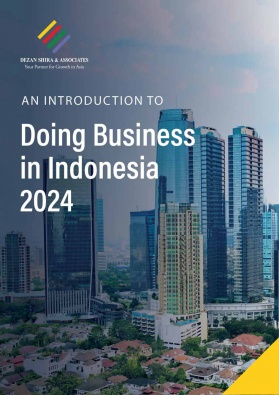
DEZAN SHIRA & ASSOCIATES
Meet the firm behind our content. Visit their website to see how their services can help your business succeed.
Want the Latest Sent to Your Inbox?
Subscribing grants you this, plus free access to our articles and magazines.
Get free access to our subscriptions and publications
Subscribe to receive weekly ASEAN Briefing news updates, our latest doing business publications, and access to our Asia archives.

Your trusted source for India business, regulatory and economy news, since 1999.

Subscribe now to receive our weekly ASEAN Edition newsletter. Its free with no strings attached.
Not convinced? Click here to see our last week's issue.
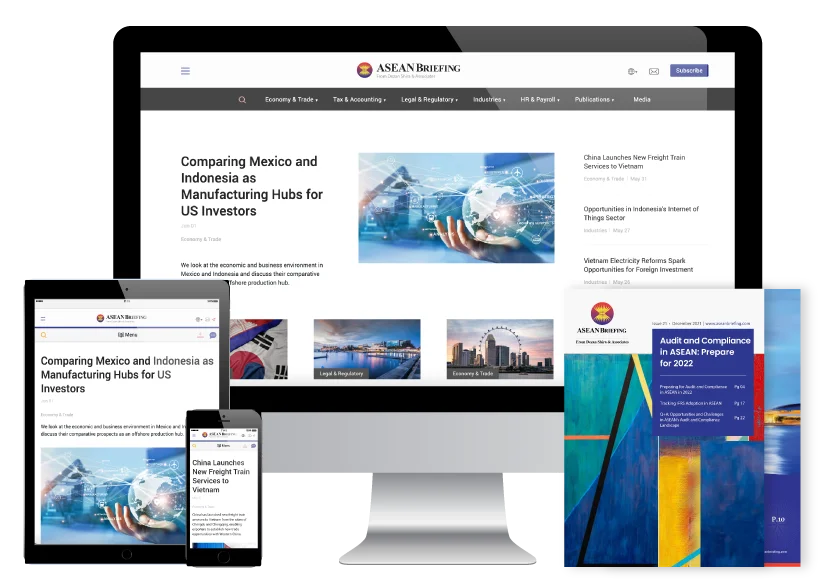
Search our guides, media and news archives
Type keyword to begin searching...
- Tour Operators
- Destinations
- Hotels & Resorts
- Agent Feedback
- Deals & Incentives
- On Location
- Industry Experts
- Sphere – HomeBased
- Digital Editions
- Subscribe today!
- Hotels and Resorts
- Types of Travel
- Subscribe Now
TTC Tour Brands launches September Travel Sale with advisor incentives
Post date: Jun 10 2024
Date: Jun 10 2024
By: Travelweek
CYPRESS, CA — TTC Tour Brands has launched a September Travel Sale, offering significant savings and exclusive incentives for Canadian travel advisors.
The sale features discounts of up to 20% on select itineraries booked by June 27 for travel in September.
Canadian travel advisors who make five bookings with TTC Tour Brands during the promotion will receive a Cdn$500 e-gift card.
Advisors enrolled in the Travel Advisor Discount Program (TADP) can also benefit from the newly expanded discount tiers.
“September is a prime travel month for TTC Tour Brands, and we deeply appreciate the dedicated efforts of our advisors,” said Guy Young, Chief Engagement Officer of TTC Tour Brands. “We’re excited to provide our advisors with a special offer to share with clients planning a European adventure.”
Here are the highlights of the promotion …
Trafalgar: Up to 15% off select itineraries, including the Best of France and Highlights of Eastern Europe tours.
Insight Vacations: Up to 20% off select European itineraries, such as Treasures of Spain, Portugal, and Morocco.
Costsaver: Up to 12% off select itineraries in Europe and North America, including the Majestic Scotland and Canyon Country Showcase tours.
Travel advisors can visit TTC’s advisor portal for more information on the offers and discounted itineraries.

Tags: Lead Story, TTC

Houston’s private developers won’t take the bait on incentives for green development. Here’s why
A fter a Houston tax abatement program – aimed at encouraging more eco-friendly development – received only one application in three years, city officials are scrambling to determine how to get private developers to participate.
The Green Stormwater Infrastructure Incentive Program is designed to promote green stormwater projects, such as planting gardens and other vegetation near drainage pipes, so that the greenery can help collect excess water or slow its runoff.
They have the added benefit of being “amenitized” drainage projects, says Michael Bloom, a sustainable practice manager who works with Houston-based 5engineering, which means they look attractive too.
The goal of the city’s program is to improve the city’s overall drainage systems, while also providing a tool for flood mitigation – and to do this with help from private developers.
MORE PLANTS: Houston now will offer tax incentives for eco-friendly development
Despite the environmental benefits and aesthetic appeal of this kind of building, developers have yet to take advantage of the incentive since it launched in 2021.
The lack of applications for a widely recommended flood mitigation tool raises the question of why developers appear uninterested – and what the city might do to make the program more appealing, particularly at a moment when it has been contending with major storm damage and flooding.
Unlike tax incentives for affordable housing programs, the city’s program for GSI projects does not help developers who may want to include this kind of infrastructure get the cash they need to do the project.
Developers are only awarded tax abatements if their project is $3 million or more and includes at least $100,000 worth of GSI. The maximum abatement serves as a reimbursement for adding it to the development.
“It's supposed to be the icing,” Bloom said. “It’s supposed to make the project a little better.”
Challenges to the application process
Perhaps the biggest challenge to the application process is knowledge of what green stormwater infrastructure is.
“No land developer even has a clue what GSI is to begin with, and they definitely don't have a clue about how to calculate the monetary benefits of it,” Bloom said, adding that the city could do a better job working with trade groups to promote what the program is and what incentives are available.
And then there’s the application process itself – neither simple nor straightforward.
Developers applying for the tax incentive not only have to thumb through the city’s 188-page Resilient Houston plan and explain how their project aligns with it, but they must also write out the social, environmental and monetary benefits of their project, Bloom said.
And once the project is built, the developer has to be available to the city at all times.
If someone from the city wants to tour the project, the developer must allow for that, he added. While the city wants to promote GSI use and show others how easy it is to implement, developers may be concerned with having more people on their property and needing to coordinate visits to avoid any interference with property operations.
Council takes notice
By law, City Council is required to update the language of its general tax abatement ordinance every two years.
During a discussion to tweak the language May 15, Council Member Sallie Alcorn, who worked with the city’s former flood czar Steve Costello and Bloom on the study that helped create the GSI incentive program, told the council that the program had flaws, but that the city needed to look for ways to limit the bureaucratic burdens.
“It’s obviously not working if we’ve only gotten one application that’s working its way through the process,” she said, adding that the changes in the ordinance weren’t going far enough to make the program more viable for developers.
TAX BREAK: Houston gives $45M, eco-friendly Memorial City tower project second-ever green building tax break
Alcorn said she would ultimately support the ordinance amendment to help increase the use of such incentives, but said she wanted the city to look for ways to improve the program even more.
After being tagged by several council members during that May 15 meeting, the item on amending the abatement language was referred back to the mayor’s office the following week.
Removing barriers
City officials say they are working to eliminate some of those barriers to applications.
Whitmire mentioned during the May 15 meeting that the program may need to be reevaluated by the city’s economic development committee. Gwendolyn Tillotson-Bell, the city’s chief economic development officer, wrote in an emailed statement that her office was working with developers and city officials on how to streamline the application process.
One component of the application the city is looking to tweak is the amount of money developers need to put toward GSI projects to get the incentive, but it has yet to determine how much that threshold will be lowered, Tillotson-Bell said.
Meanwhile, Bloom and Council Member Abbie Kamin are advocating for a lift of all the application hurdles.
Kamin also has been working with the city for months to incorporate more GSI components into the city’s engineering manual.
“The more standards we can create based on science and data, the easier we can have these things permitted,” Kamin.


- The Star ePaper
- Subscriptions
- Manage Profile
- Change Password
- Manage Logins
- Manage Subscription
- Transaction History
- Manage Billing Info
- Manage For You
- Manage Bookmarks
- Package & Pricing
Loke: Get the first-mover advantage of the ECRL
Tuesday, 11 Jun 2024
Related News

Lessen the pollution - Jakarta want more people walk and use public transportation for their mode of travel
Interview: malta-china cooperation on green transportation "promising," says ceo of top auto dealer, feature: motorcycles transform rural transportation in zambia.
KUALA LUMPUR: The Transport Ministry is encouraging corporations to choose the upcoming East Coast Rail Link (ECRL) as their primary mode of transport for cargo, with incentives in place for early adopters.
The ECRL, set to optimise connectivity between west coast and east coast of Peninsular Malaysia, will be operational for passengers by 2027 and for cargo from 2028, linking key ports including Port Klang and Kuantan Port, as well as industrial areas, more efficiently.
Transport Minister Anthony Loke said companies should plan ahead and start discussions with Malaysia Rail Link (MRL) Sdn Bhd, the project owner of the ECRL.
“The companies need to engage with MRL to get a better rate now.
“The rates will be competitive and you can get the first-mover advantage, just like Perusahaan Otomobil Kedua Sdn Bhd (Perodua),” Loke told a press conference in conjunction with the signing of memoranda of understanding signing between MRL and Perodua, as well as MRL and Kuantan Port Consortium.
Loke stressed on the importance of planning ahead, noting that facilities, cargo handling and other logistics should be planned well in advance.
“You can’t just decide to use the ECRL when it’s ready in 2028, as the infrastructure may not be ready to meet your needs. Industries must come forward to talk to us right now. If you come forward now, we can tailor our services to your needs and offer better cargo rates.”
Loke said the ECRL should be the main mode of transport for ports and industrial areas due to its safety and efficiency.
He described the ministry’s strategy as a “carrot and stick” approach.
Loke said the government wants companies to use the ECRL as the main mode of transport and hence, they are providing incentives.
If the incentives do not generate enough traction, he said the government may tighten road transportation rules, particularly for heavy cargo vehicles. This will reduce the number of heavy vehicles on highways like the Karak Highway.
“The main objective is to reduce heavy vehicle traffic on highways, especially the Karak Highway,” said Loke, highlighting the high number of accidents on that route.
The MoU between MRL and Perodua is aimed at providing efficient and reliable transportation solutions tailored to Perodua’s needs upon the ECRL’s operationalisation in January 2027.
The objective is to potentially reduce logistics costs through a more efficient transportation system, strategically enhancing Perodua’s existing logistics operations.
The ECRL will see the transportation of Perodua vehicles by rail to Kelantan, Terengganu, and Pahang.
Speaking to reporters on the sidelines, Perodua president and chief executive officer (CEO) Datuk Seri Zainal Abidin Ahmad said the move would see lower costs, especially when it comes to transporting vehicles to Sabah and Sarawak.
This is because of the advantages of using Kuantan Port compared with the current Klang Port.
He noted that it is too early to reveal further details on the MoU.
However, he said Perodua had plans to transport not only cars, but also goods out of Serendah, thus reducing reliance on trucks and lorries.
On the other hand, the MoU between MRL and Kuantan Port Consortium is set to maximise the modal share of railway transportation for goods moving in and out of Kuantan Port by utilising the ECRL service.

“This integration will offer competitive logistics costs and improve delivery times for goods moving in and out of Kuantan Port via the ECRL alignments,” he said.
He noted that Kuantan Port has an annual capacity of 39 million tonnes and the ability to handle ships of up to 180,000 deadweight tonnes.
Tags / Keywords: Transport Ministry , East Coast Rail Link (ECRL) , transport , cargo ,
Found a mistake in this article?
Report it to us.
Thank you for your report!

HUAWEI Watch Fit 3: Sleek, smart, and super affordable
Next in business news.

Trending in Business
Air pollutant index, highest api readings, select state and location to view the latest api reading.
- Select Location
Source: Department of Environment, Malaysia
Others Also Read
Best viewed on Chrome browsers.

We would love to keep you posted on the latest promotion. Kindly fill the form below
Thank you for downloading.
We hope you enjoy this feature!
Likino-Dulyovo, Russia
Essential likino-dulyovo.

- Museum Dulevo Porcelain
- Museum Kudykinsk District. Smirnov
- Likino-Dulev Museum of Local Lore
- Church of the Holy Apostle and Evangelist John the Theologian
- Dulevskiy Palace of Culture
Served by the Norwegian Meteorological Institute and NRK
Elektrostal
Current conditions, weather forecast for the next 10 days, tuesday 11 june, wednesday 12 june, thursday 13 june, friday 14 june, saturday 15 june, sunday 16 june, monday 17 june, tuesday 18 june, wednesday 19 june, thursday 20 june.

IMAGES
COMMENTS
Incentives Puerto Rico's natural beauty and world-class attractions make it a must-visit vacation spot, but these are not the only attractive selling points for the global tourism industry. The Island's incentive package for the tourism and hospitality industry is equally enticing. You can access the Puerto Rico Tourism Company's Virtual Clerk to request incentives. IncentivesEligible ...
Corporate incentive travel program tips. From soliciting suggestions from staff to leveraging social media, here are the steps for creating an effective corporate incentive travel program. 1. Ask your staff for ideas. A travel program is only an incentive if your staff wants to take the trips you choose.
The federal government will work to implement the strategy under the leadership of the TPC and in partnership with the private sector, aiming toward an ambitious five-year goal of increasing American jobs by attracting and welcoming 90 million international visitors, who we estimate will spend $279 billion, annually by 2027.. The new National Travel and Tourism Strategy supports growth and ...
Tourism incentives are a powerful tool for governments and businesses to attract tourists and boost the local economy. Incentives are designed to create a positive impact on tourism and encourage visitors to explore new destinations, engage in unique experiences, and stay for an extended period.
The Travel, Tourism, and Outdoor Recreation program is divided into two components: State Tourism Grants: $510 million in direct awards to help states quickly invest in marketing, infrastructure, workforce and other projects to rejuvenate safe leisure, business and international travel. Competitive Grants: $240 million to help communities that ...
2022 National Travel and Tourism Strategy. Focuses federal efforts to support travel and tourism in the United States. Establishes a five-year goal of attracting 90 million visitors, who will spend $279 billion annually. Envisions private and public sectors working together to increase the volume and value of tourism.
Incentive travel remains a top motivator, and many reward earners are eager for a new adventure (or just a change of scenery). For some top performers, an upcoming incentive trip could be their first time traveling since the pandemic began—a trip they've been dreaming about for ages. Our experts are excited as ever to craft once-in-a ...
Abstract. Around the world, expansion in tourism has resulted in the industry being recognized as a development option that few countries are prepared to ignore. Governments of all persuasions offer a range of investment incentives that, ideally, should be targeted at produc ing a balanced development of tourism to meet the many needs of ...
The initial cooperation will consist in a series of trainings to promote green investments for a long term the recovery of the tourism sector. The first training is planned to start on 4 June, 2020 at 15:00 CET (Madrid time) in a webinar format, and it will culminate with an accreditation training provided by the EDGE Experts. Registration.
Incentive tourism. Incentive tourism, or incentive travel, programs have long been used by companies or institutions as a noncash reward to their employees and external partners for achieving key business objectives (SITE 2014 ). It is one of the major types of the MICE (Meetings, Conferences, Incentives, and Events) sector.
Incentive tourism or travel has roots in expectancy and motivation theory (Mair 2015).Incentive tourism, as one of the major types of the MICE (Meetings, Incentives, Conferences, and Events) sectors, has long been used by companies or institutions as a noncash reward to their employees and external partners for achieving key business objectives (Society of Incentive Travel Executives 2021).
Incentive planners are the most bullish, with 37% seeing incentive travel spend 10%-49% above 2021, and another 22% seeing incentive travel up 50% or more over 2021. Tourism boards have the most conservative outlook, likely as a result of domestic travel and tourism being brisk throughout the latter part of the COVID pandemic.
Incentive travel programs come in various forms, each catering to different employee preferences and organizational budgets. Here are the most common types: All-Expense-Paid Trips: These are the most extravagant incentive travel programs, covering everything from flights and accommodation to meals and activities. They offer employees a worry ...
7. Brightspot. Brightspot is an incentive travel company that specializes in designing and managing incentive programs and trips. Their experts are CMPs (Certified Meeting Professionals) that have deep knowledge of the travel industry and extensive experience in designing corporate events and meetings.
The Tourism Development Act, Chapter 87:22 (TDA) was introduced to support the development of tourism in Trinidad and Tobago. The Act provides for Tourism Development Incentives to be granted to owners/operators of various types of tourism projects, once these projects have the potential to contribute substantially to the development, growth and expansion of the industry.
The Kentucky Tourism Development Act (KTDA) is an incentive program designed to encourage the development, expansion or rehabilitation of tourism projects throughout the Commonwealth. Projects can recover up to 25 percent of approved development costs over a 10 year term through the recovery of incremental sales tax generated by the project.*
The Kentucky Tourism Development Act (KTDA) is an incentive program designed to encourage the development, expansion or rehabilitation of tourism projects throughout the Commonwealth. Projects can recover up to 25 percent of approved development costs over a 10 year term through the recovery of incremental sales tax generated by the project.*
Additionally, travel incentives can be a valuable perk that attracts top talent to the organization. Prospective employees may view the employee travel incentive program as indicating that the company values its workforce and is committed to providing meaningful benefits. Top 5 Benefits of Travel Incentives for Employees 1.
Travel incentives and travel certificates are a great addition to corporate incentive travel programs for any business. Whatever your industry, the right travel premiums from Odenza can generate higher revenue and increase repeat sales! Give your business a boost today - offer your customers travel incentives on select purchases to thank them ...
Travel incentives are more than just rewards; they're an opportunity for your team to relax, unwind, and experience new things together. A well-planned travel incentive can help foster a sense of community within your team, and that feeling of togetherness can boost productivity levels. Offering travel incentives can also improve employee ...
Thailand's government has approved new tax incentives aimed at stimulating domestic tourism during the traditional low season. These incentives, which are available from May 1 to November 30, 2024, are divided into two categories: tax incentives for businesses holding seminars, and incentives for individuals traveling for leisure.
Joint Travel Regulations. The Joint Travel Regulations (JTR) implements policy and law to establish travel and transportation allowances for Uniformed Service members (i.e., Army, Navy, Air Force, Marine Corps, Space Force, Coast Guard, National Oceanic and Atmospheric Administration Commissioned Corps, and Public Health Service Commissioned Corps), Department of Defense (DoD) civilian ...
Global tour leader TTC Tour Brands, whose portfolio includes Trafalgar, Contiki, Brendan Vacations, Costsaver, Insight Vacations and Luxury Gold, has announced new "September Travel Sale" with ...
The sale features discounts of up to 20% on select itineraries booked by June 27 for travel in September. Canadian travel advisors who make five bookings with TTC Tour Brands during the promotion ...
Unlike tax incentives for affordable housing programs, the city's program for GSI projects does not help developers who may want to include this kind of infrastructure get the cash they need to ...
In 1938, it was granted town status. [citation needed]Administrative and municipal status. Within the framework of administrative divisions, it is incorporated as Elektrostal City Under Oblast Jurisdiction—an administrative unit with the status equal to that of the districts. As a municipal division, Elektrostal City Under Oblast Jurisdiction is incorporated as Elektrostal Urban Okrug.
KUALA LUMPUR: The Transport Ministry is encouraging corporations to choose the upcoming East Coast Rail Link (ECRL) as their primary mode of transport for cargo, with incentives in place for early ...
Elektrostal Hotel, Elektrostal: See 25 traveler reviews, 44 candid photos, and great deals for Elektrostal Hotel, ranked #1 of 2 B&Bs / inns in Elektrostal and rated 4 of 5 at Tripadvisor.
Likino-Dulyovo Tourism: Tripadvisor has 61 reviews of Likino-Dulyovo Hotels, Attractions, and Restaurants making it your best Likino-Dulyovo resource.
21° / 12°. 0.3 mm. 4 m/s. Open hourly forecast. Updated 02:26. Forecast as PDF Forecast as SVG. Weather forecast for Elektrostal for the next 10 days.